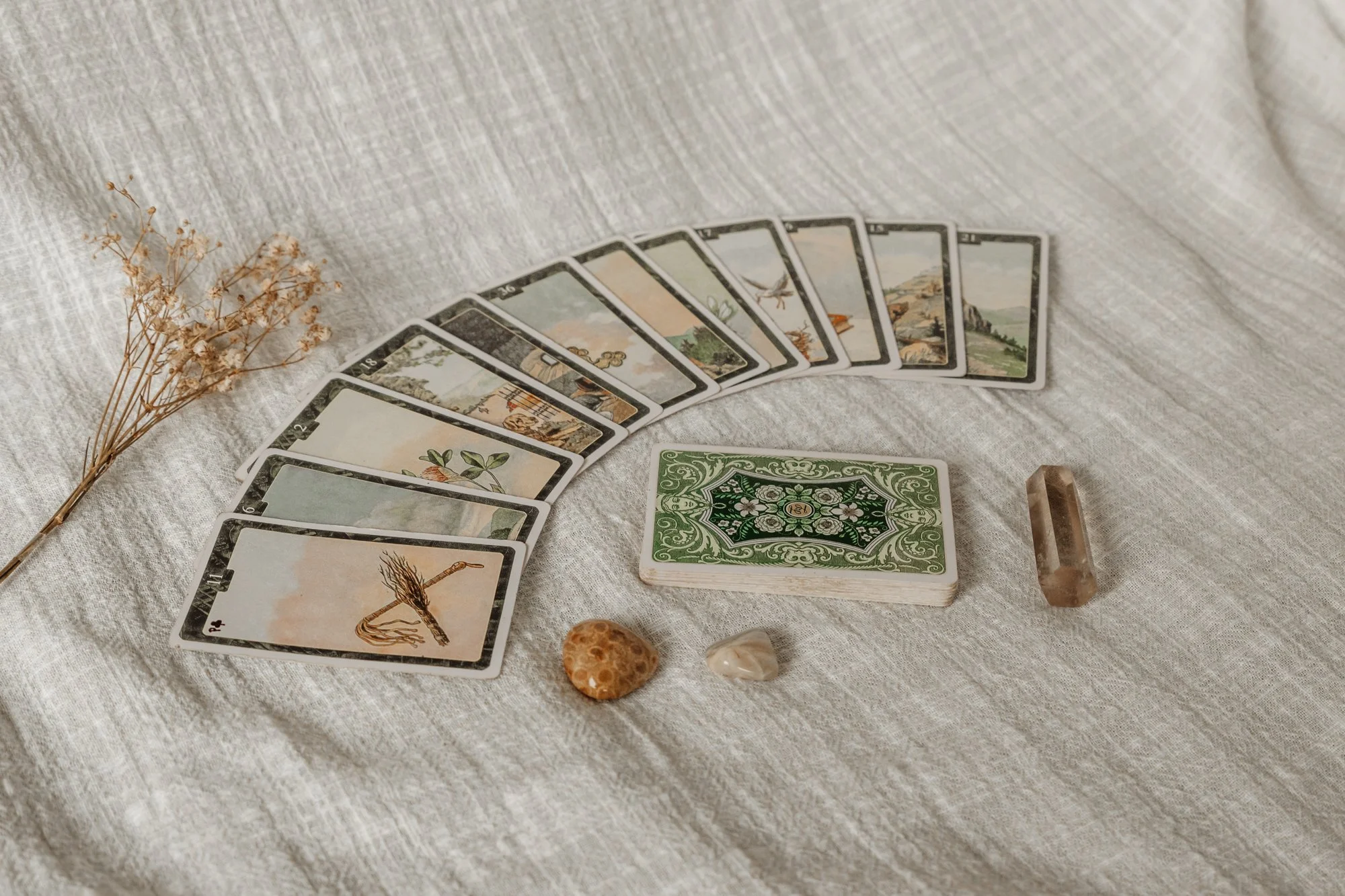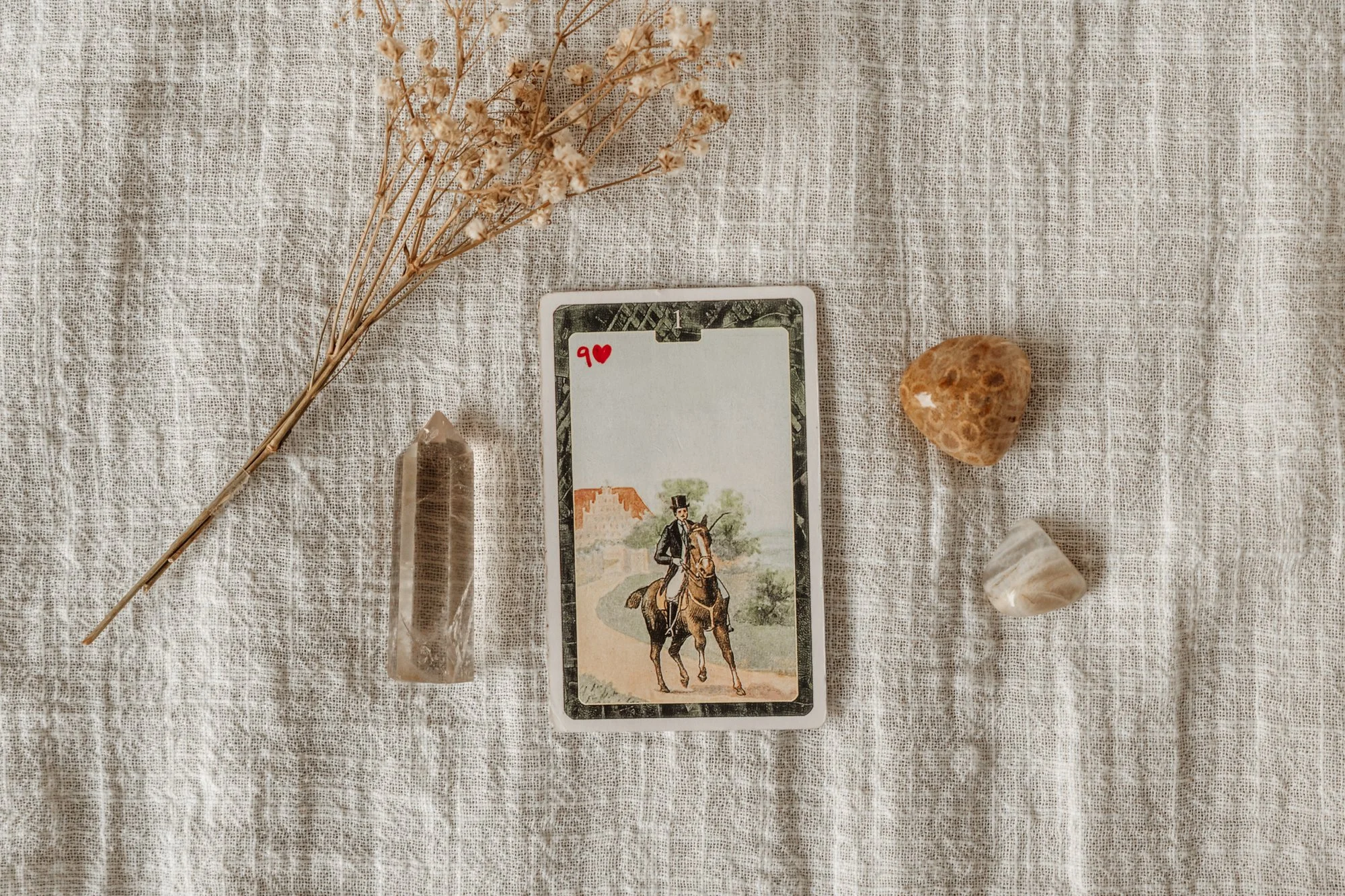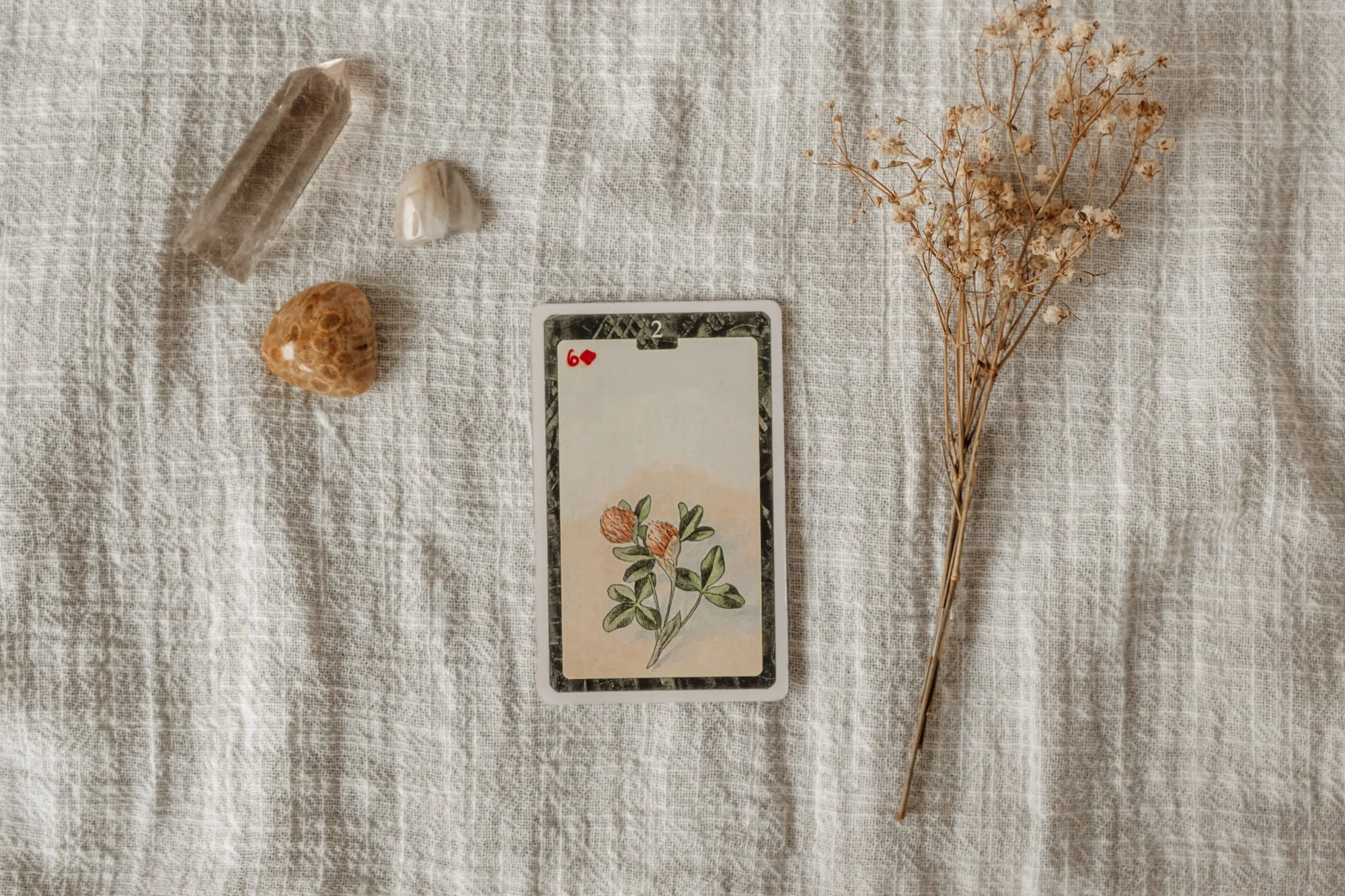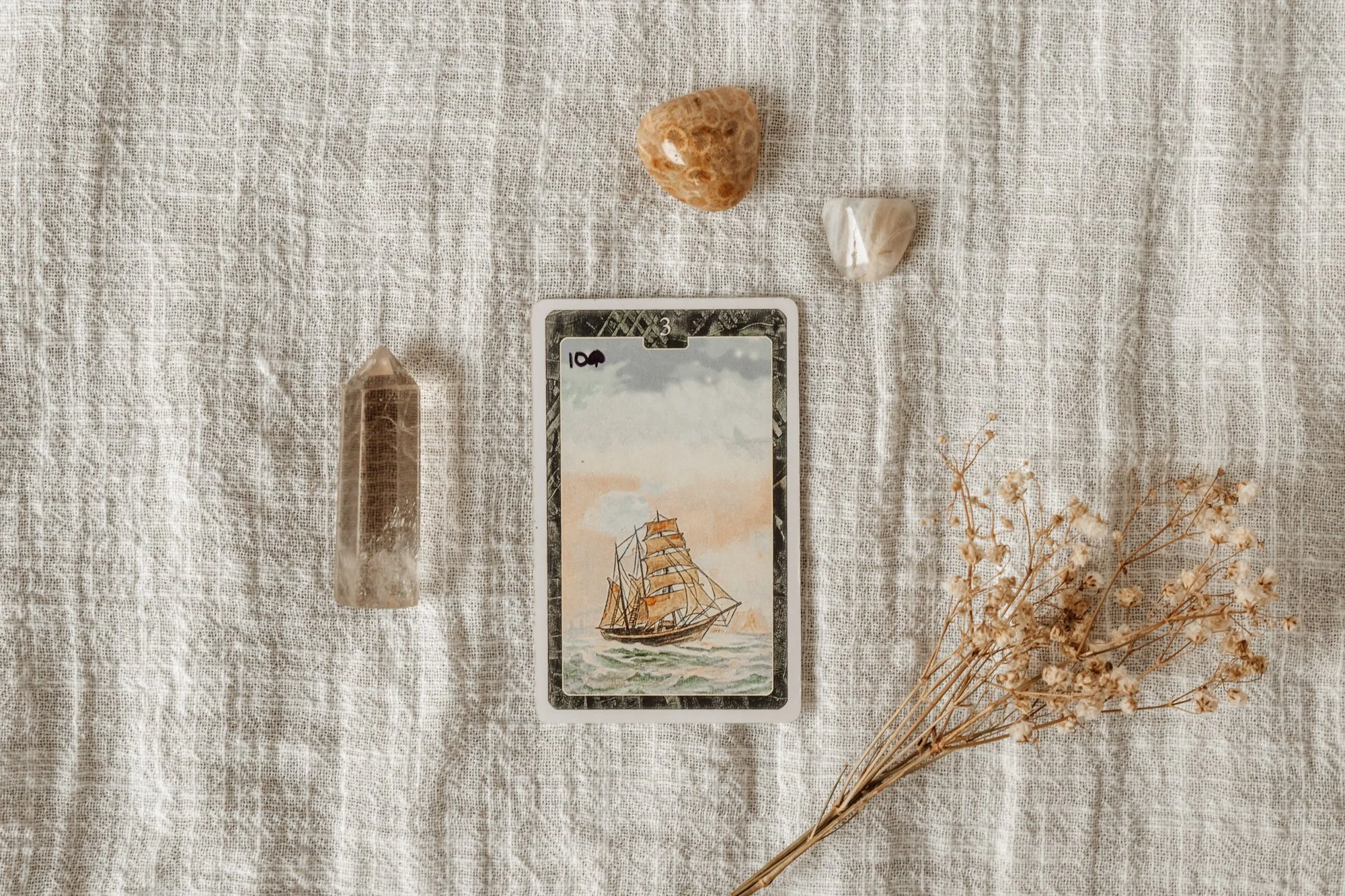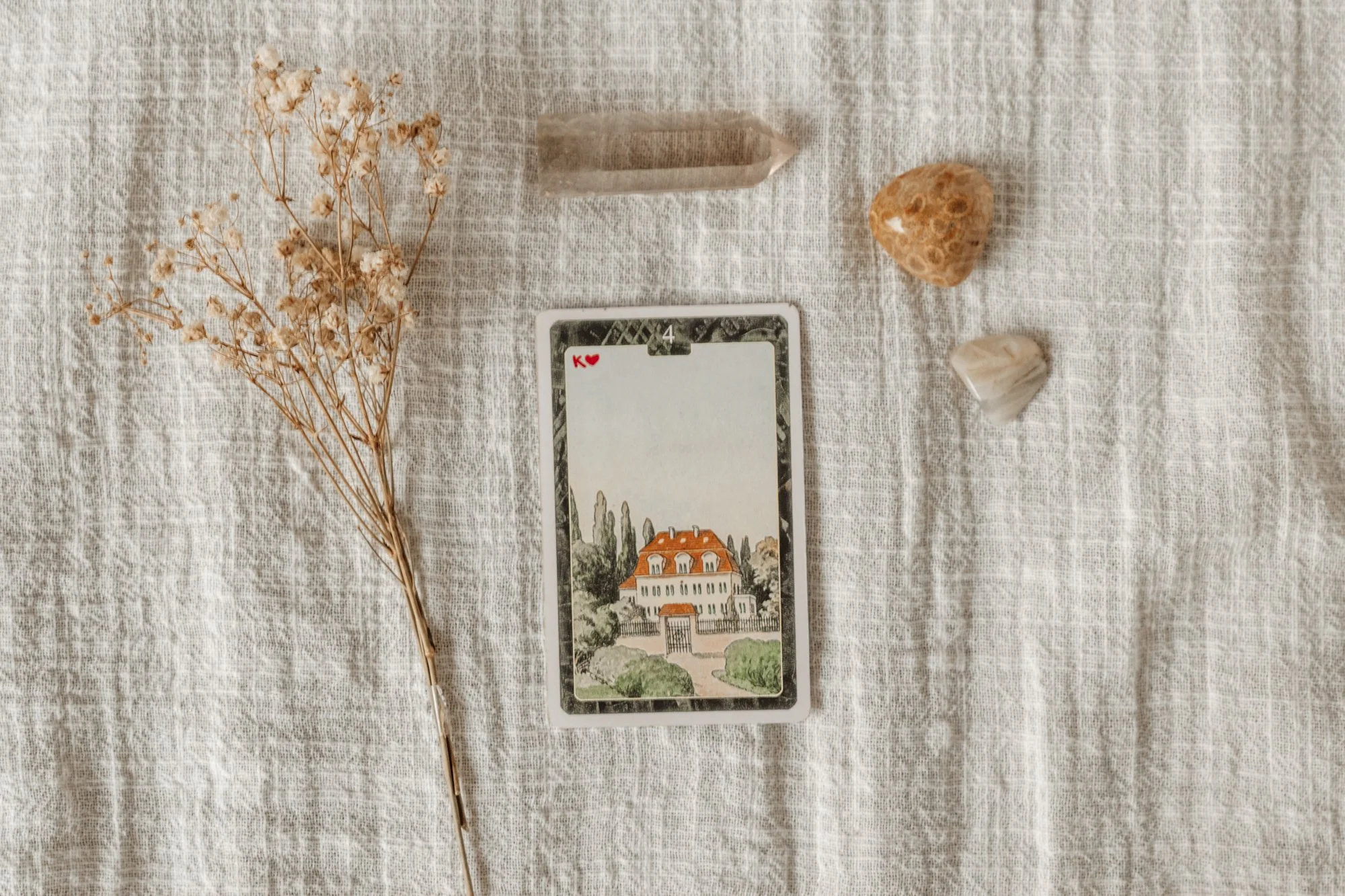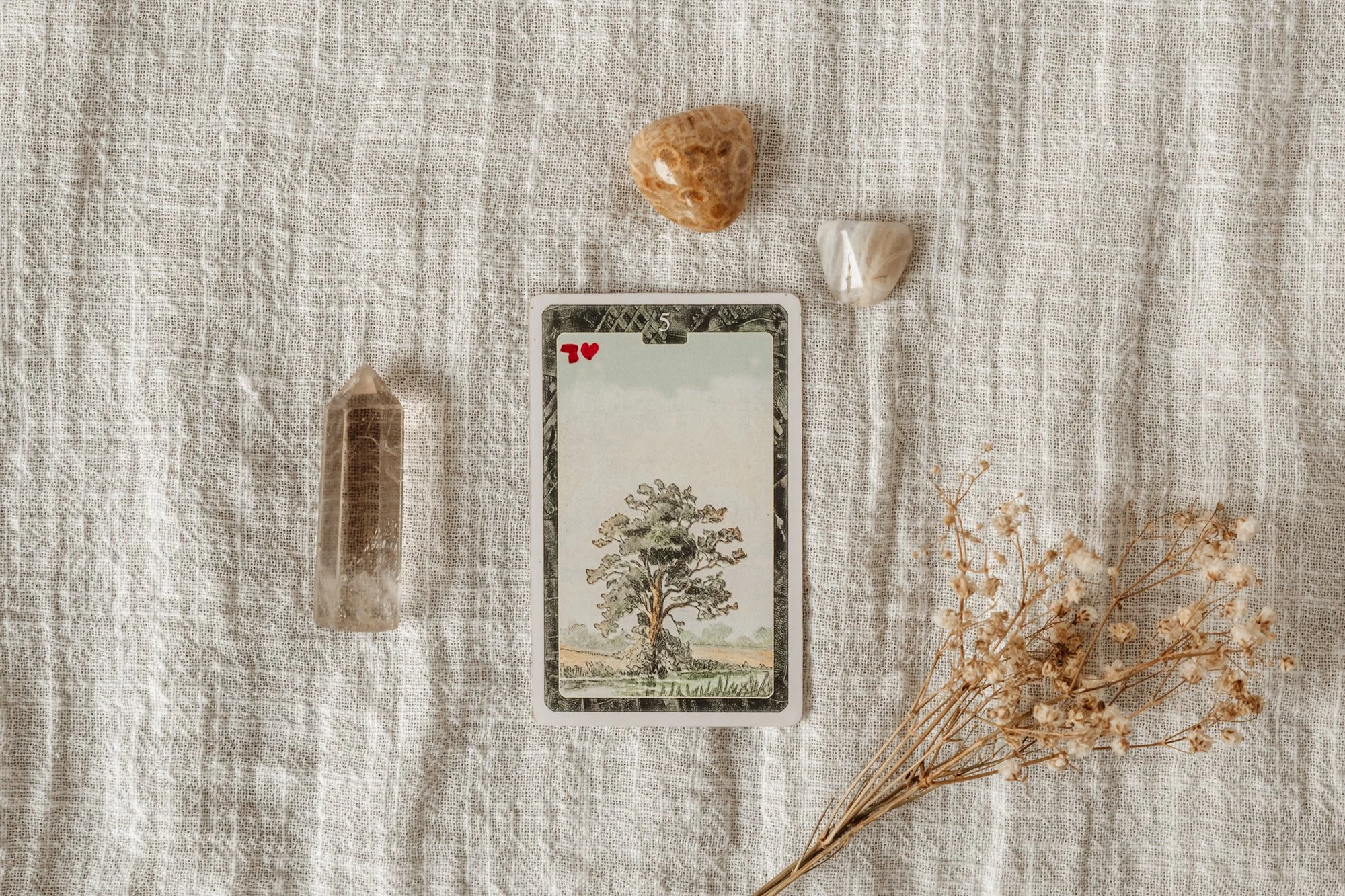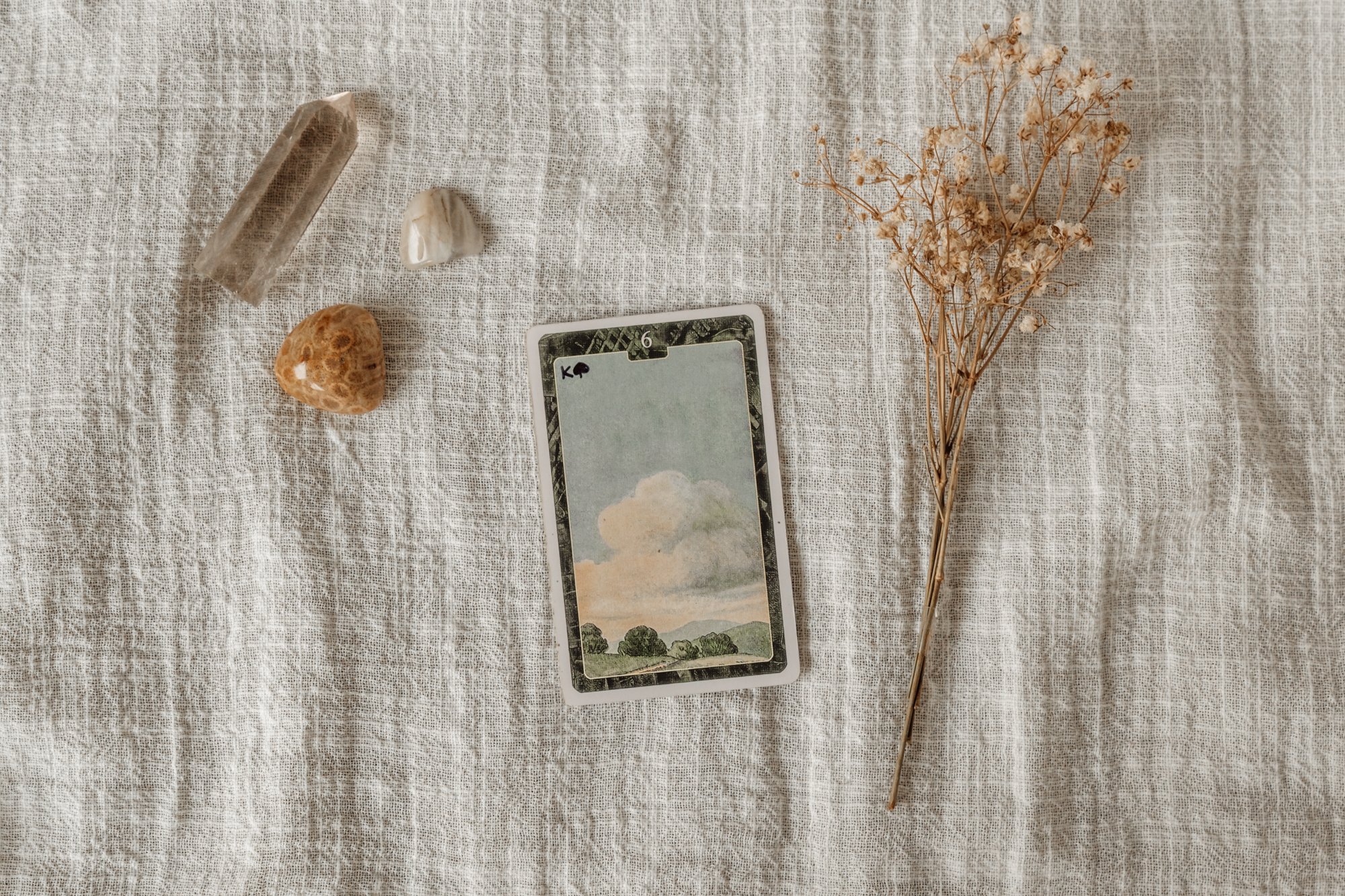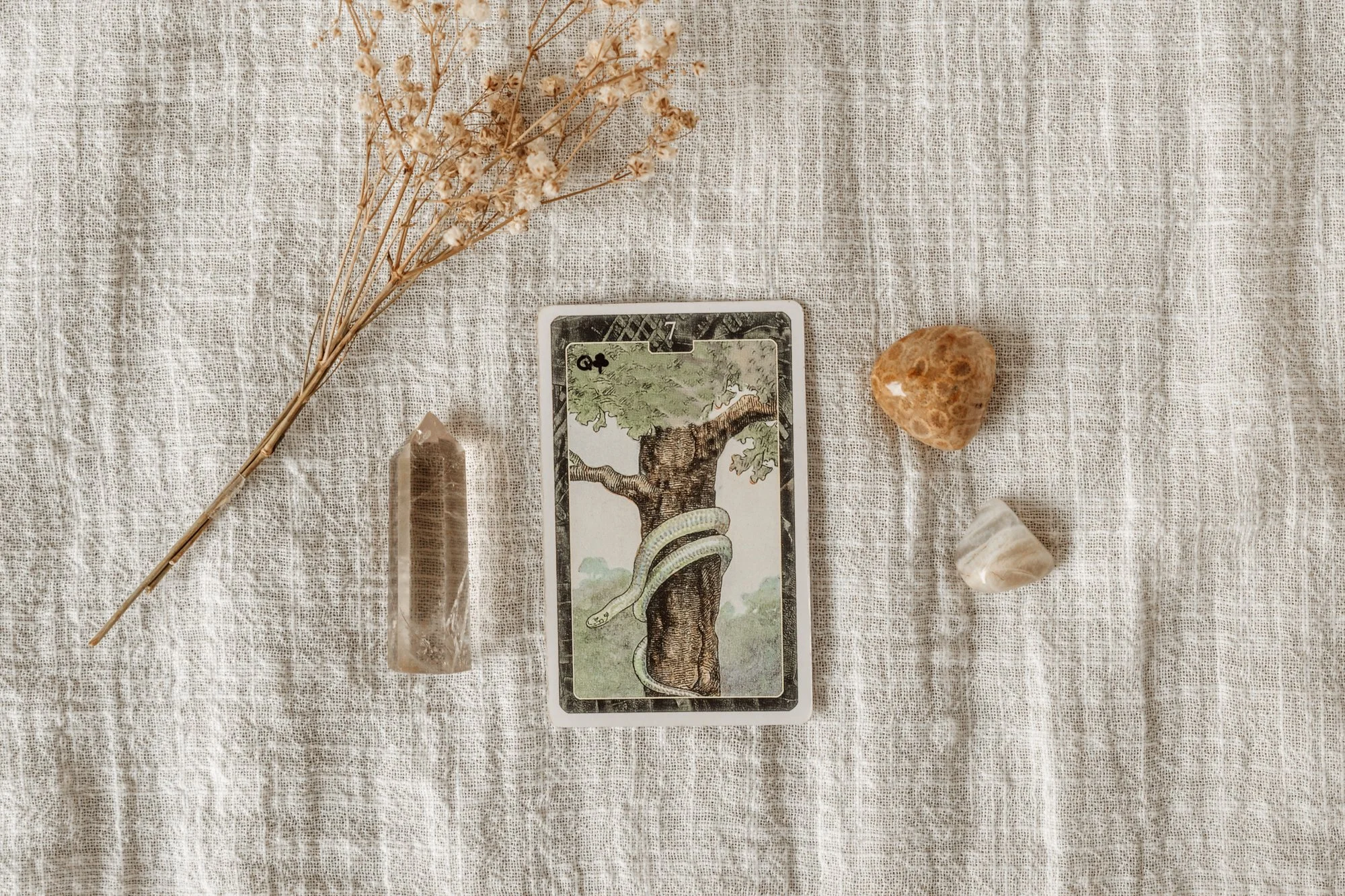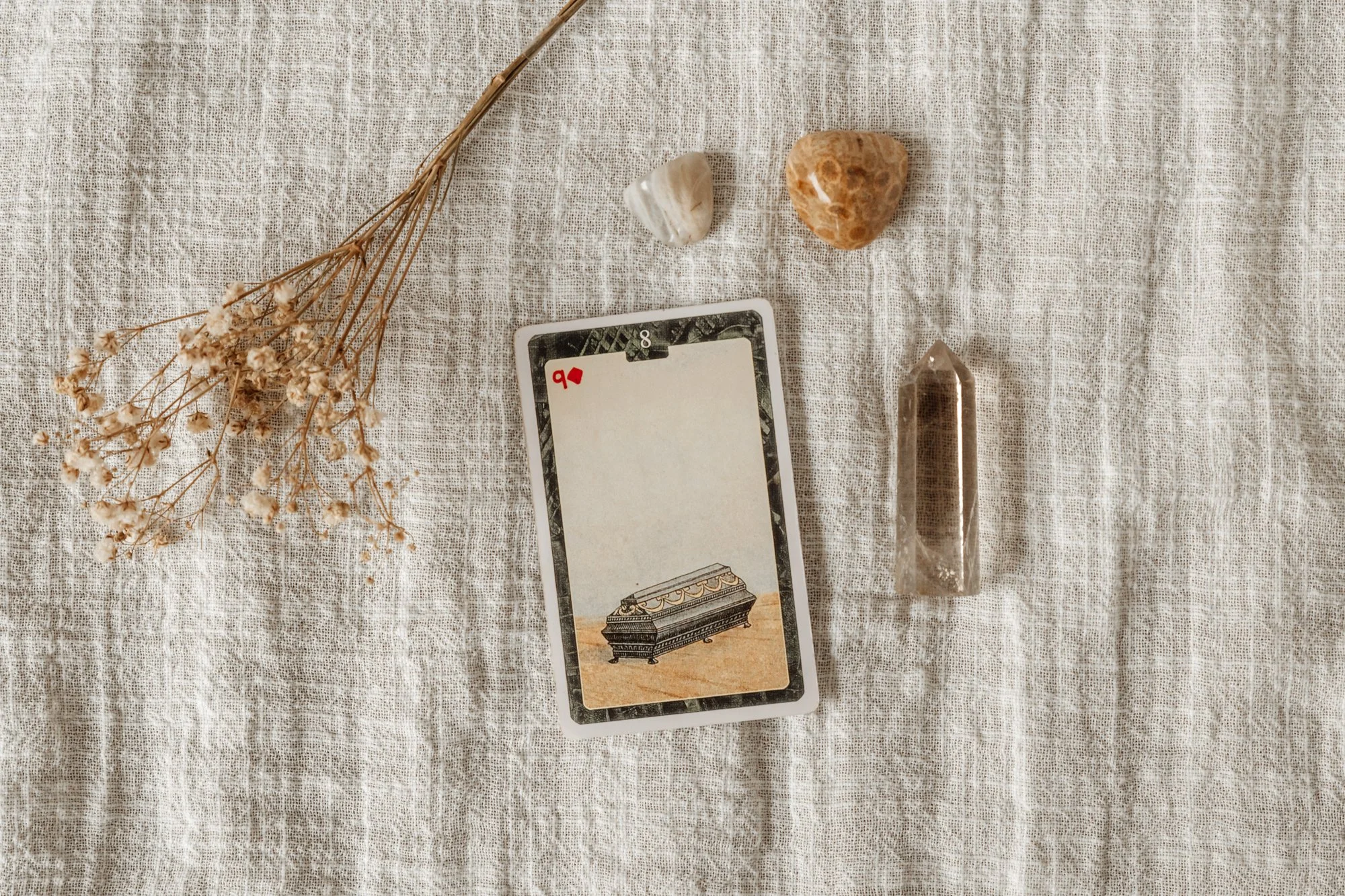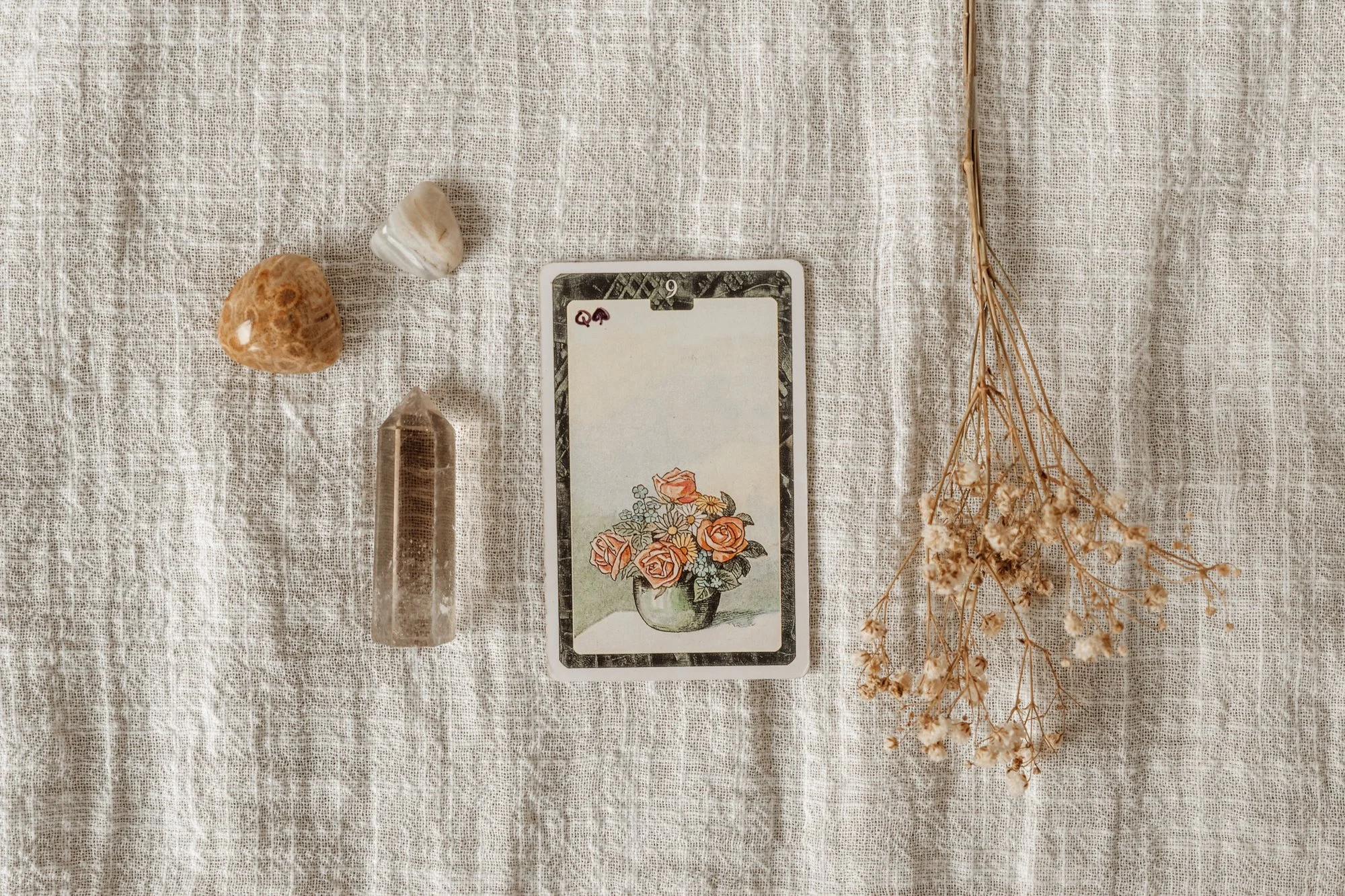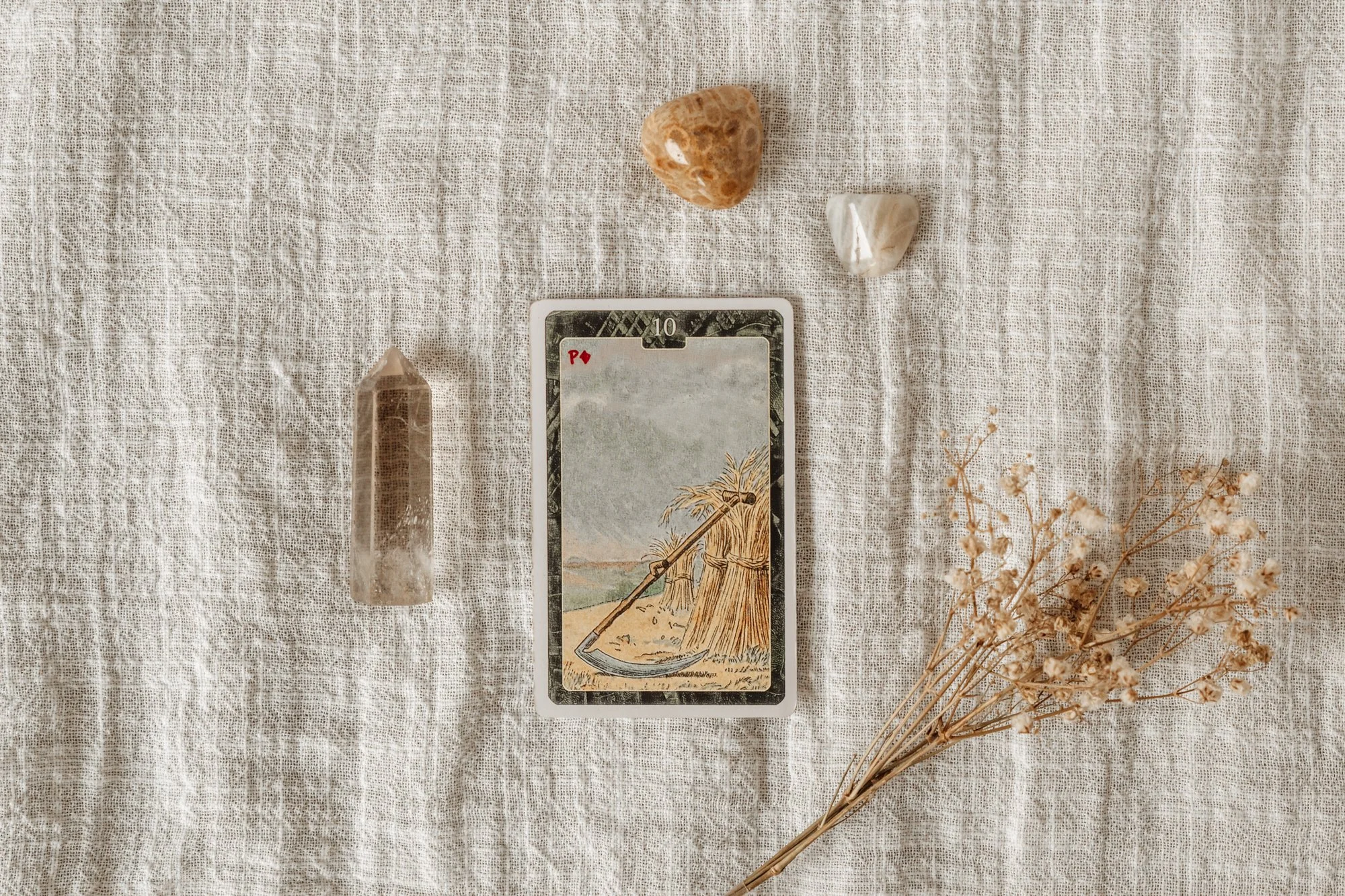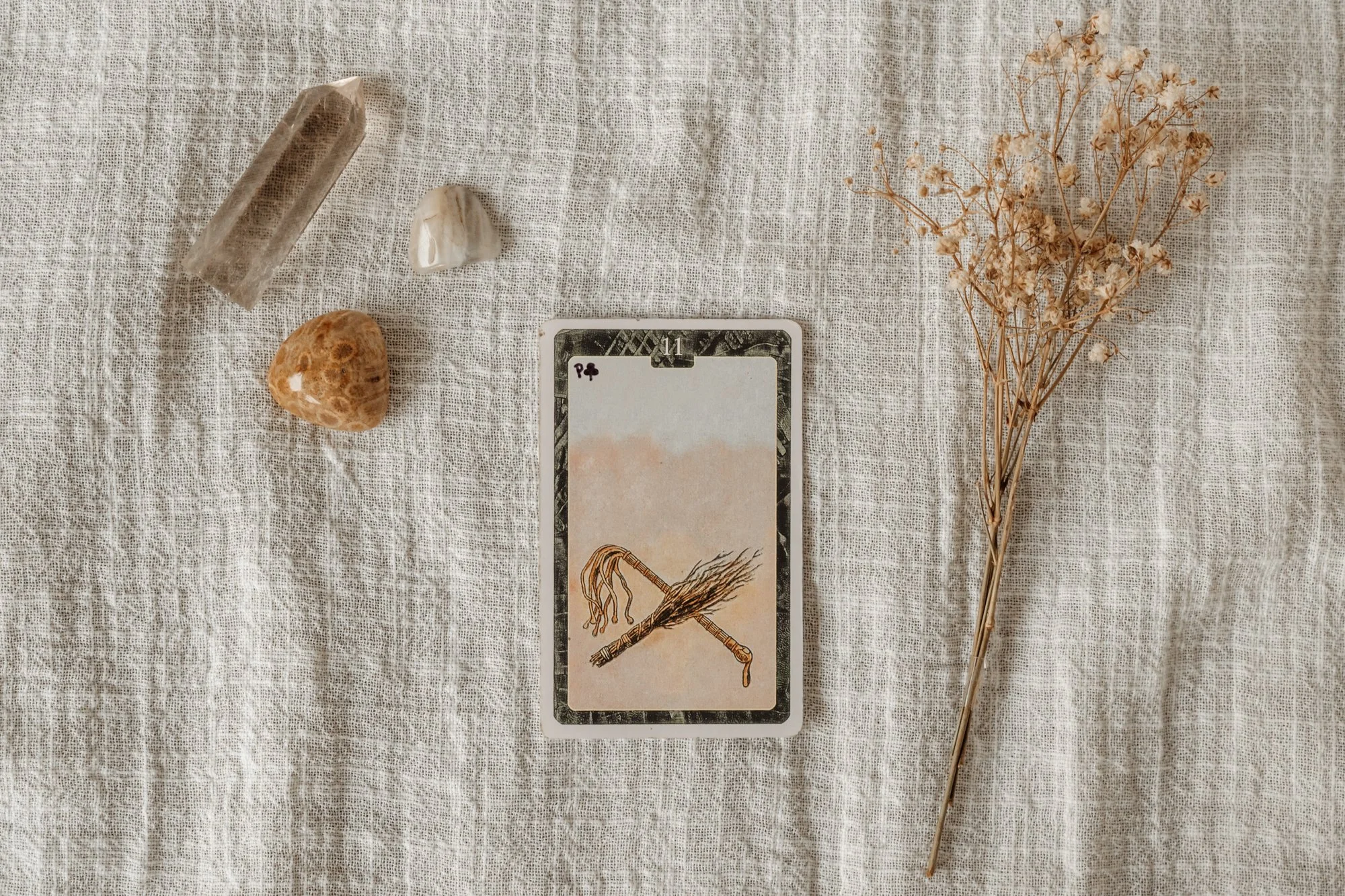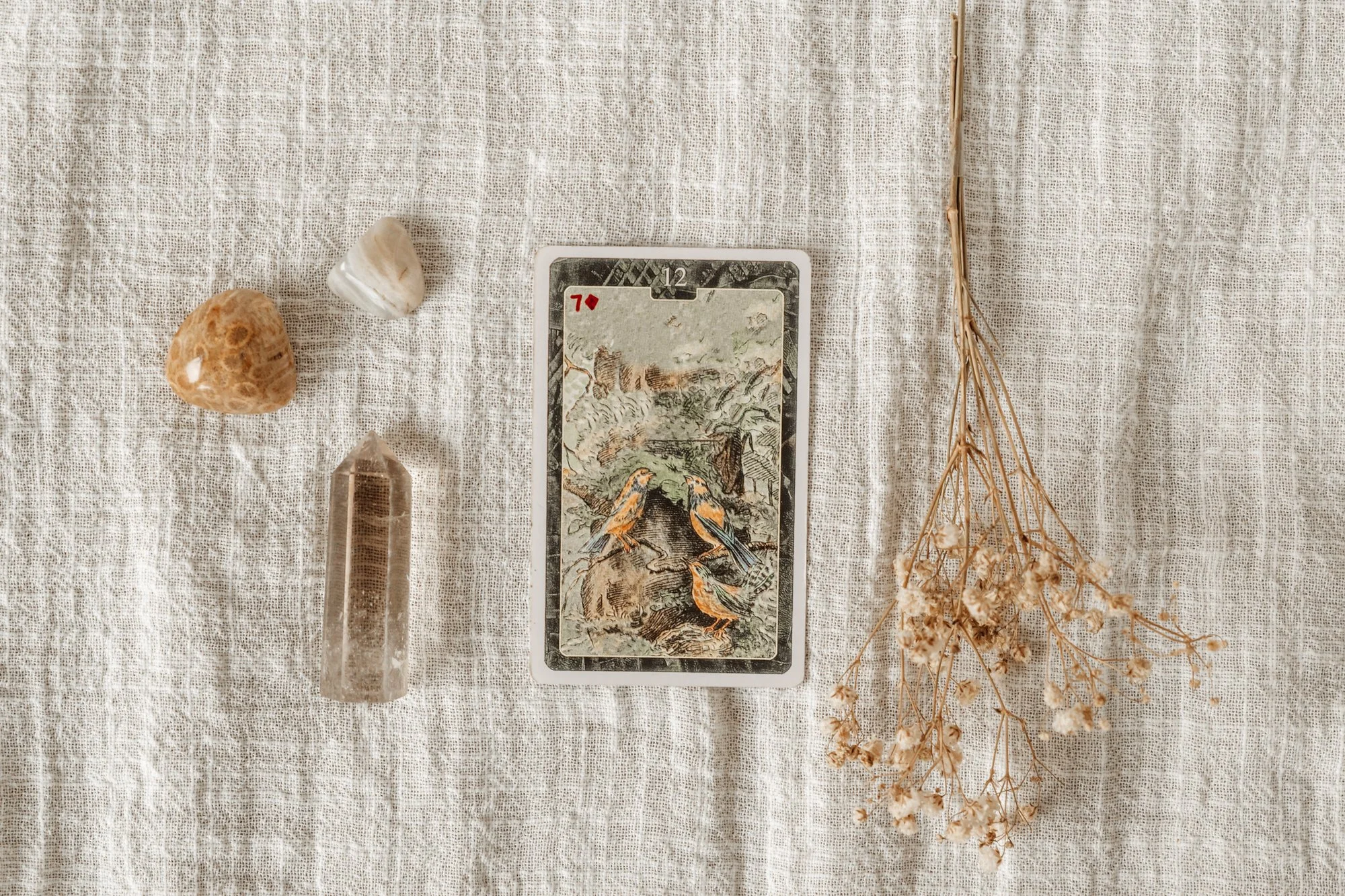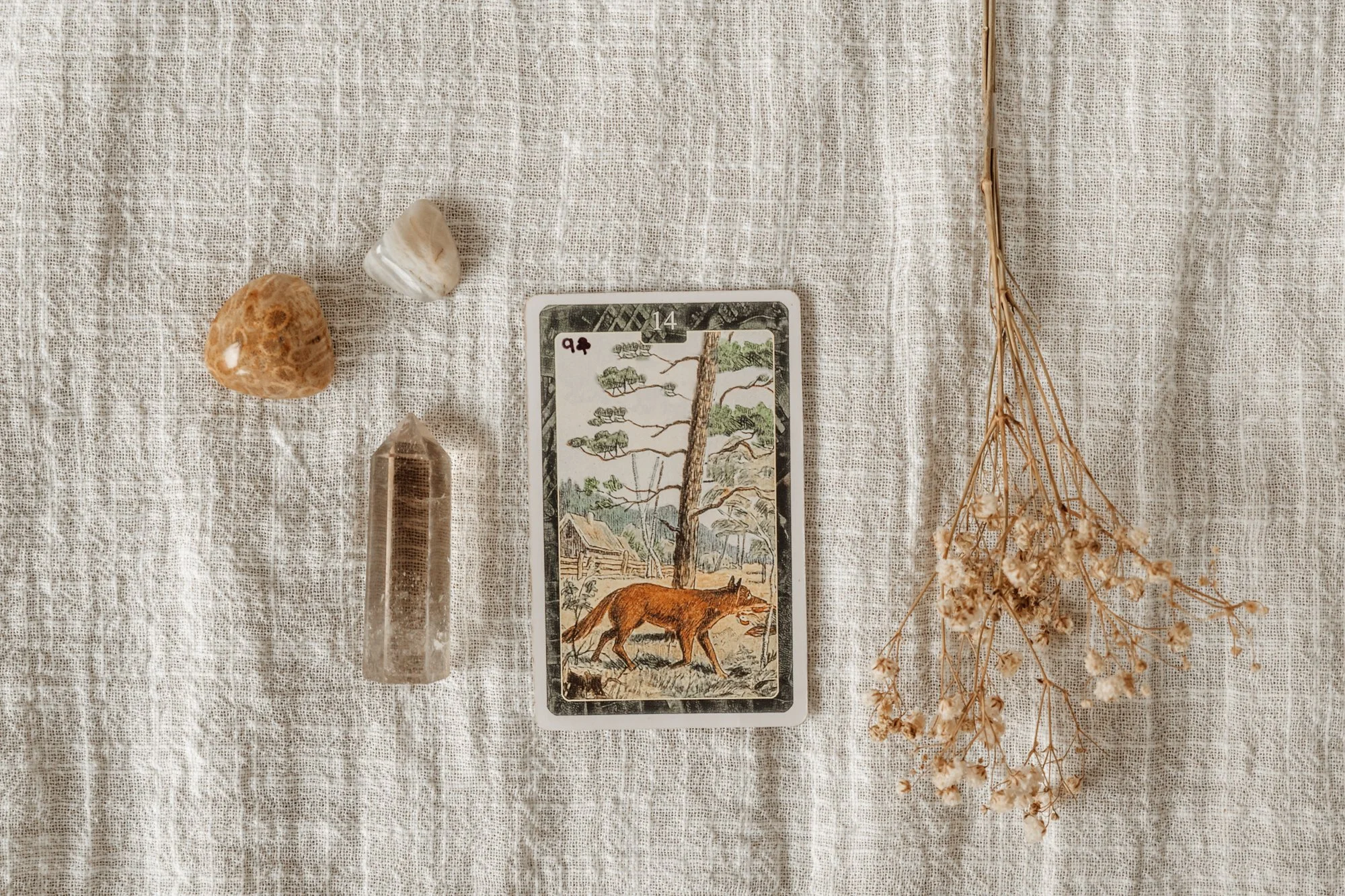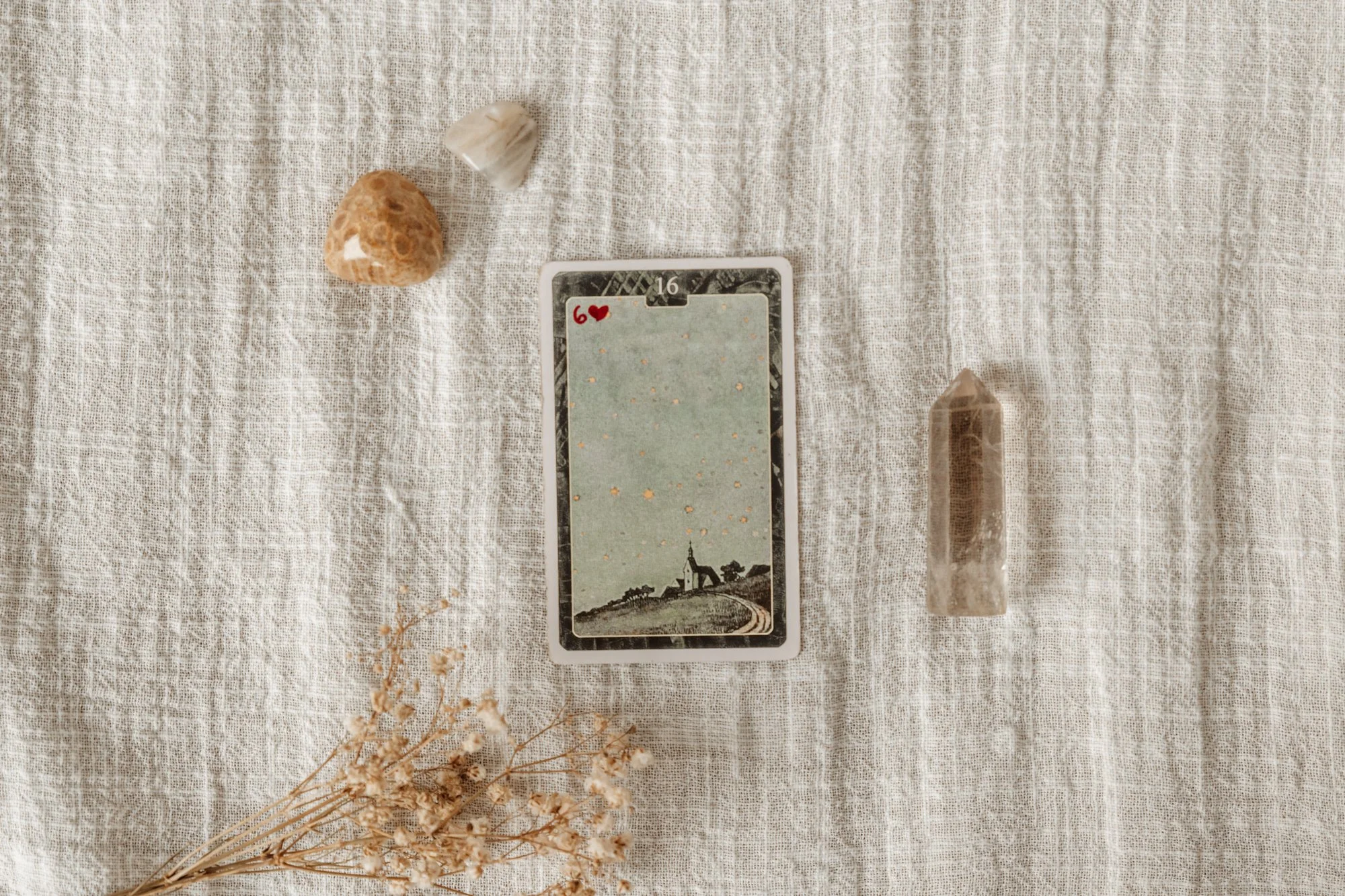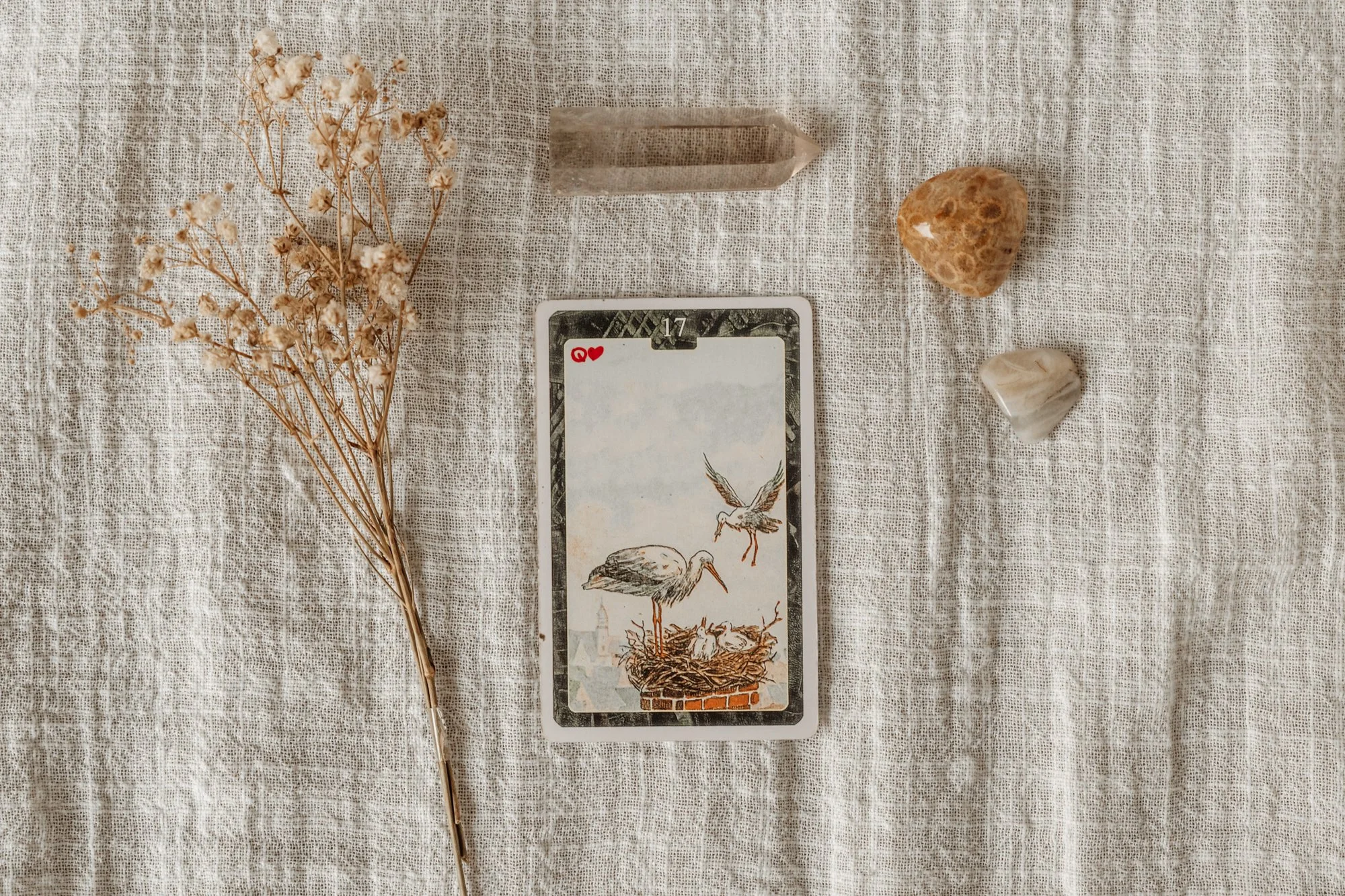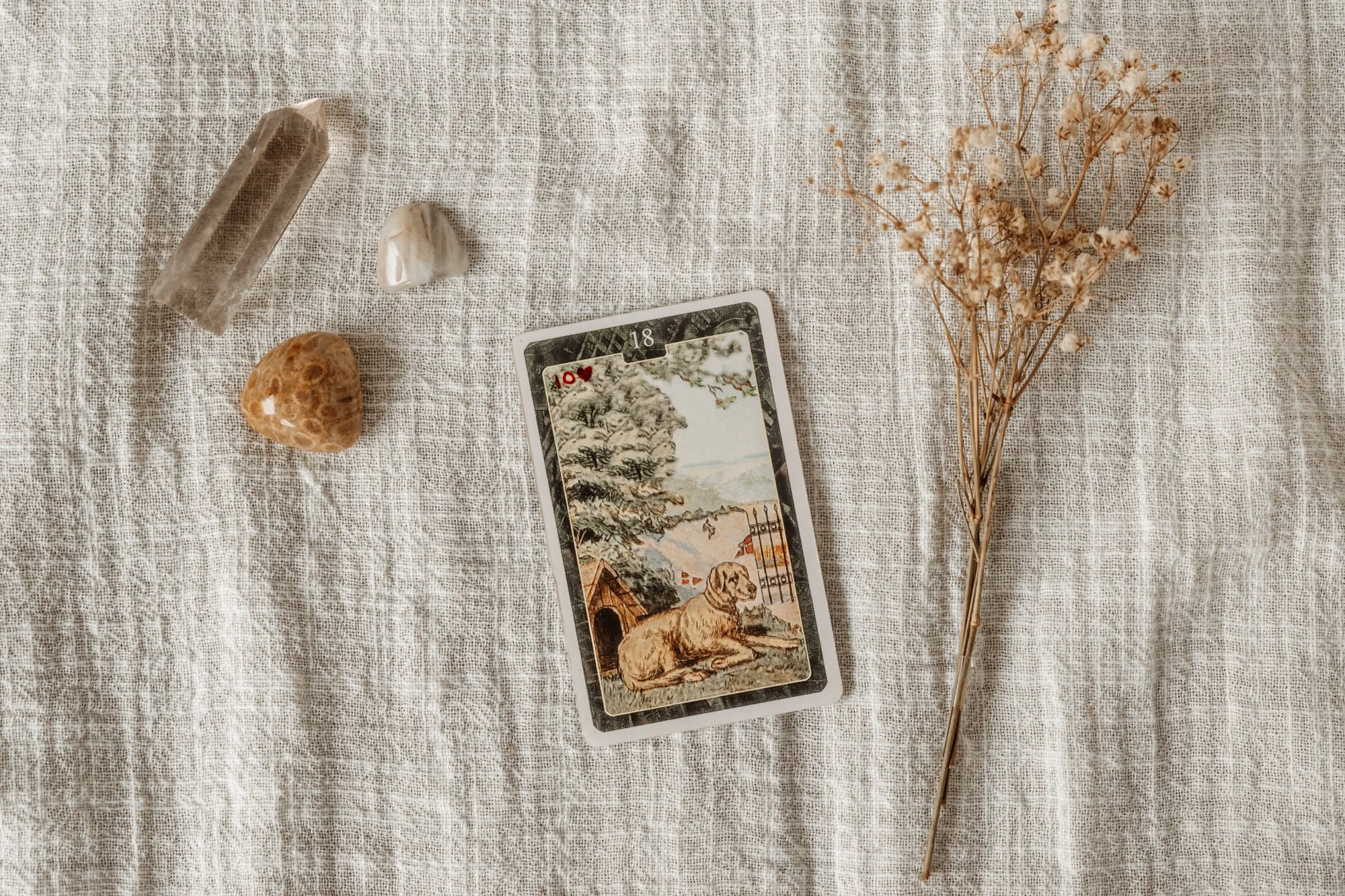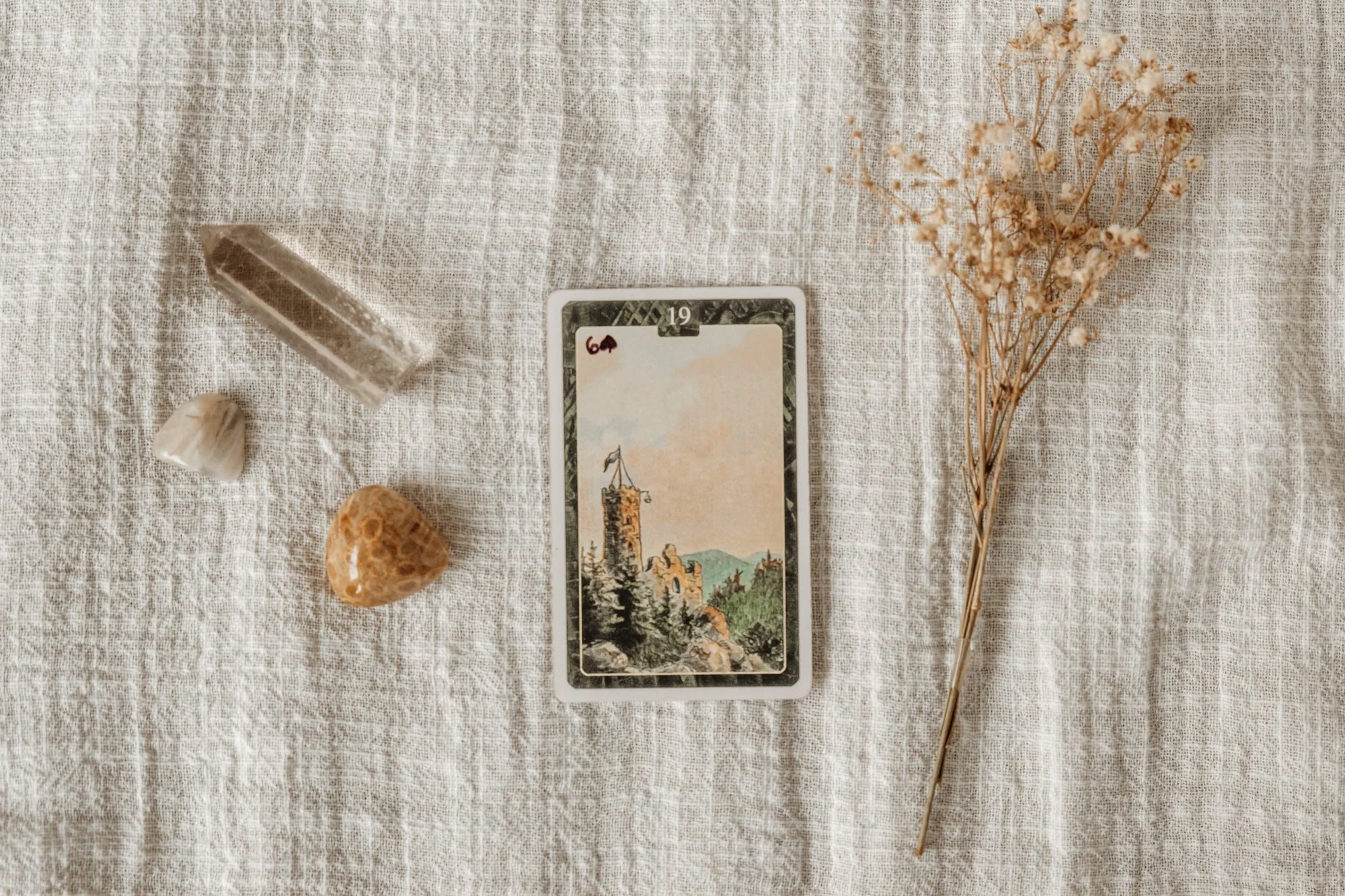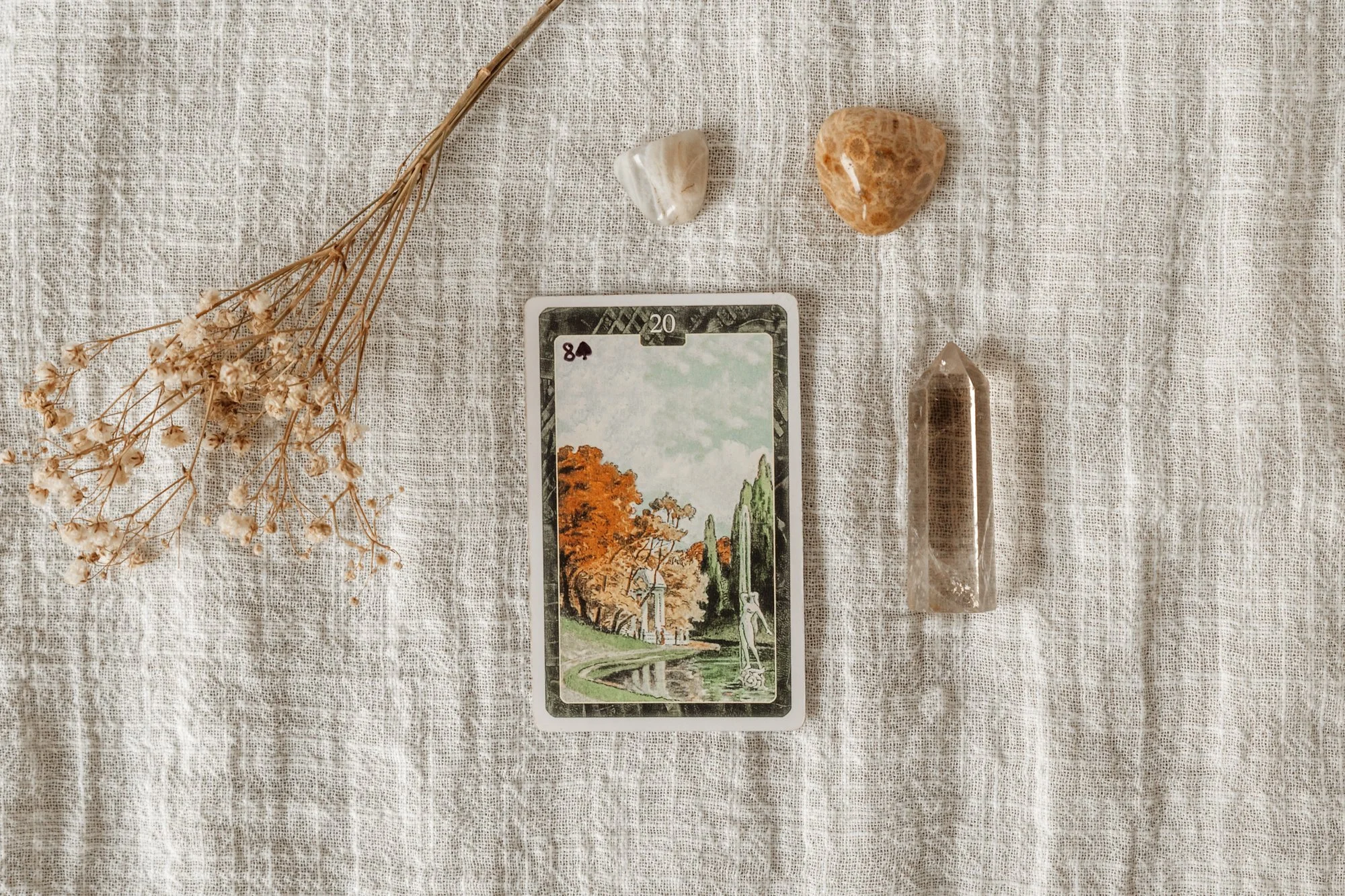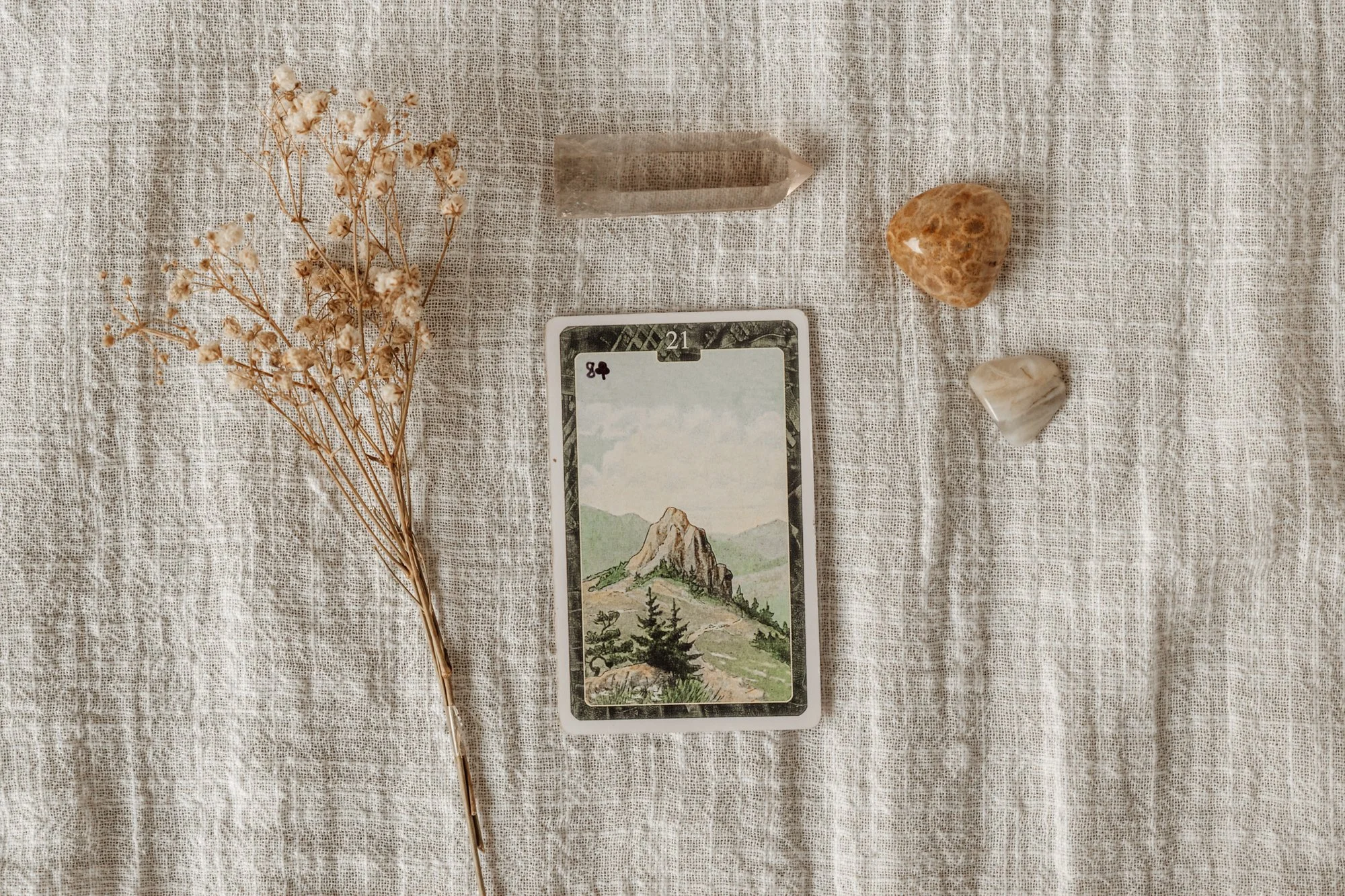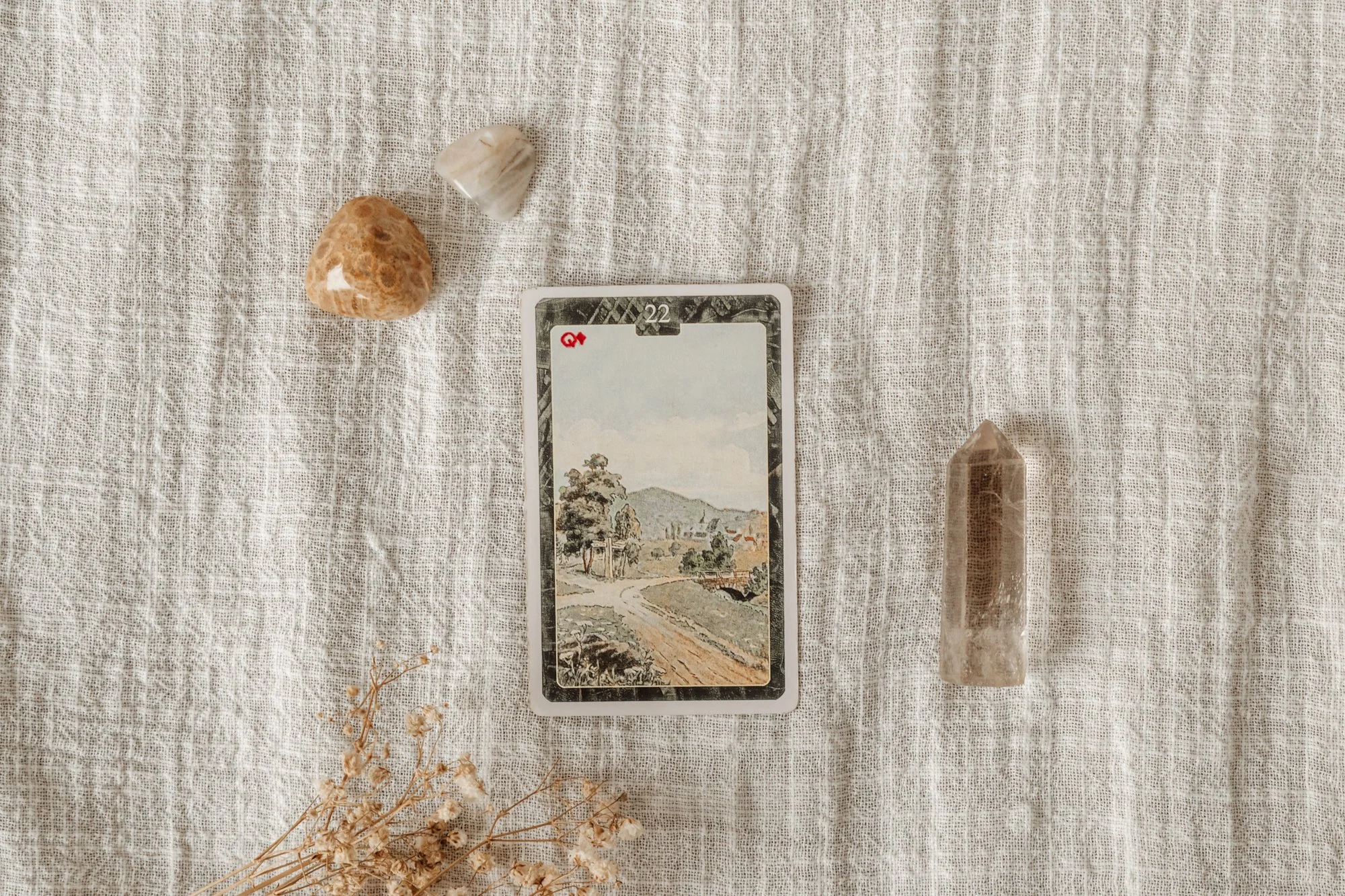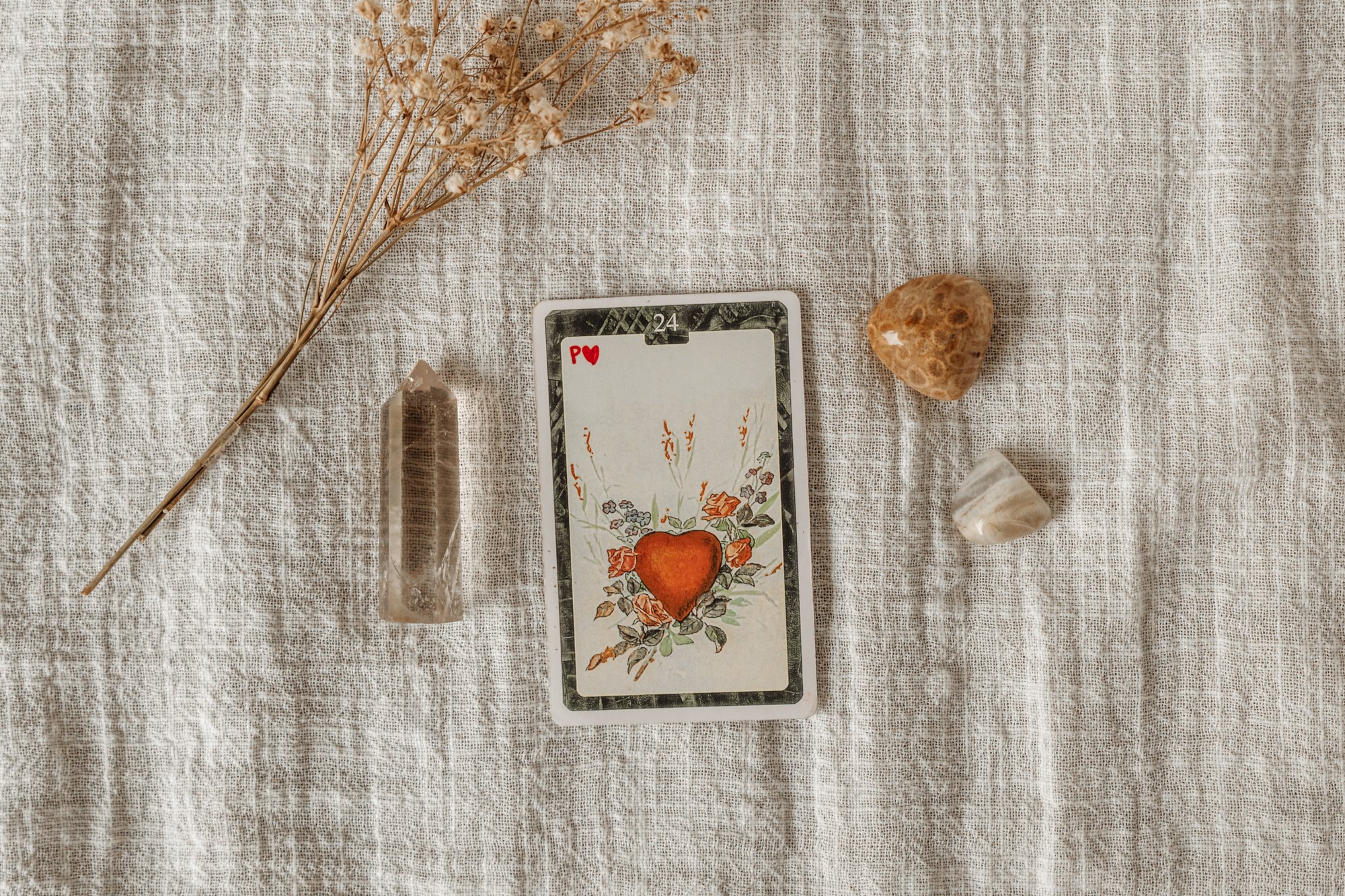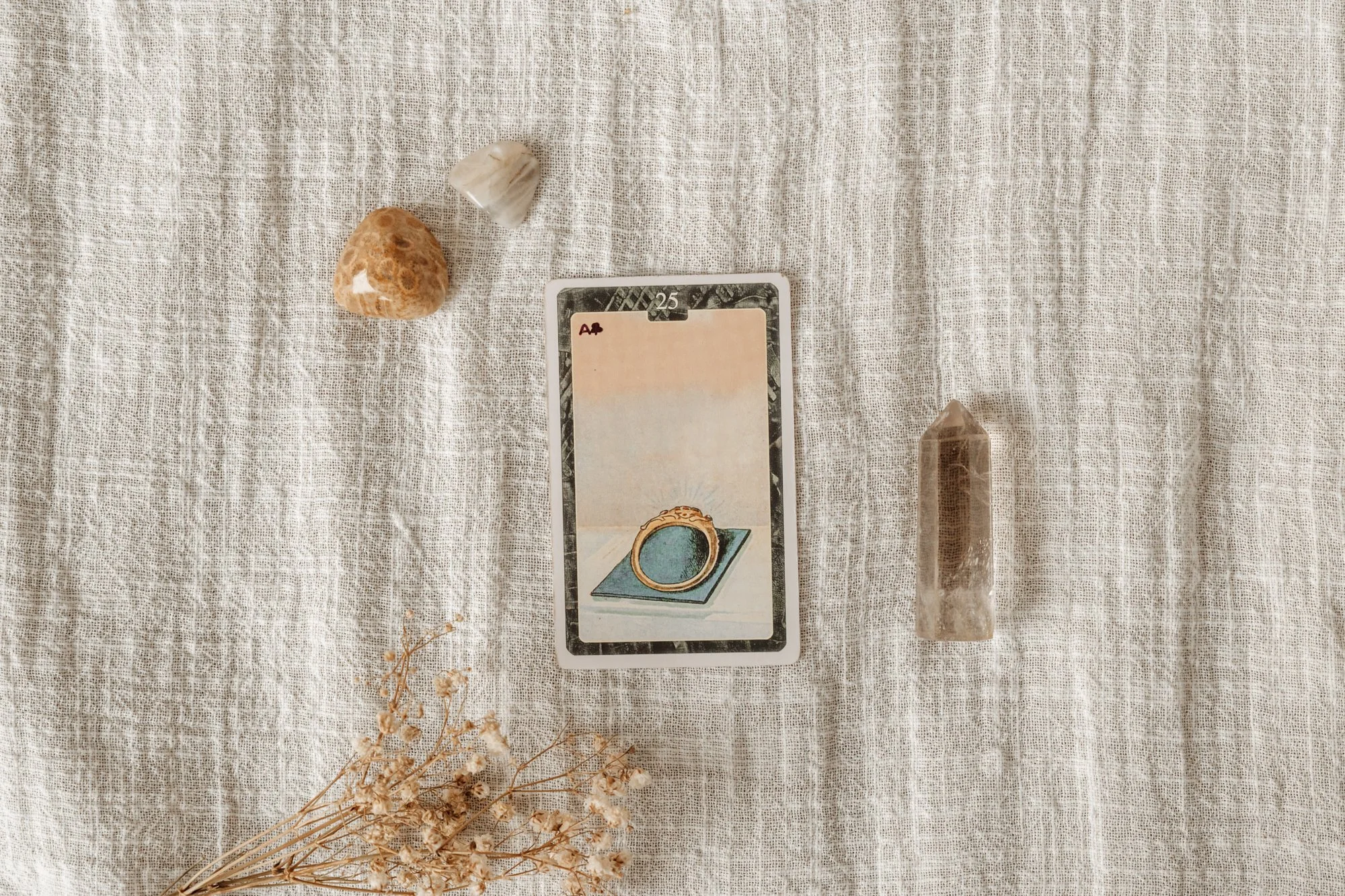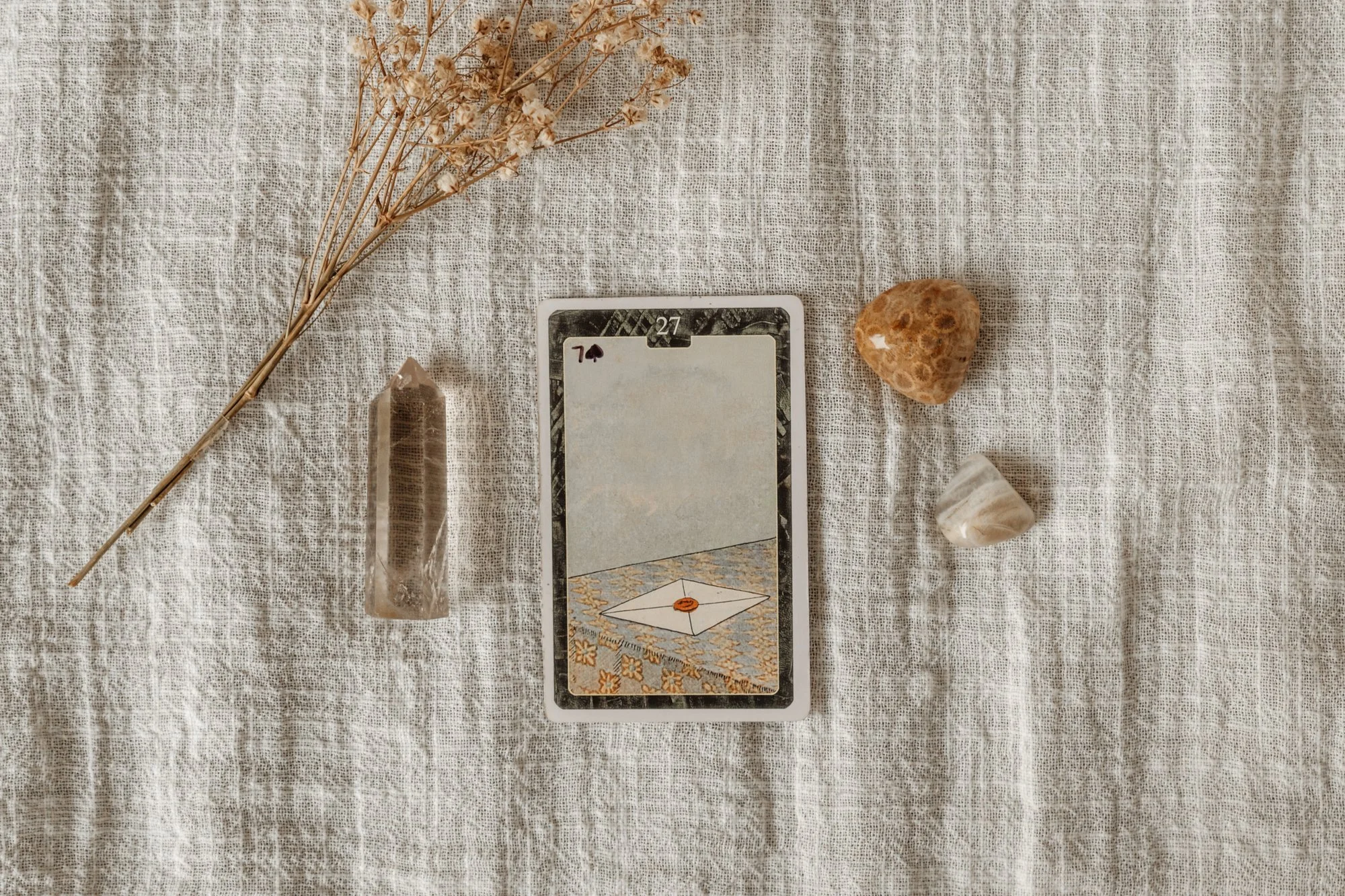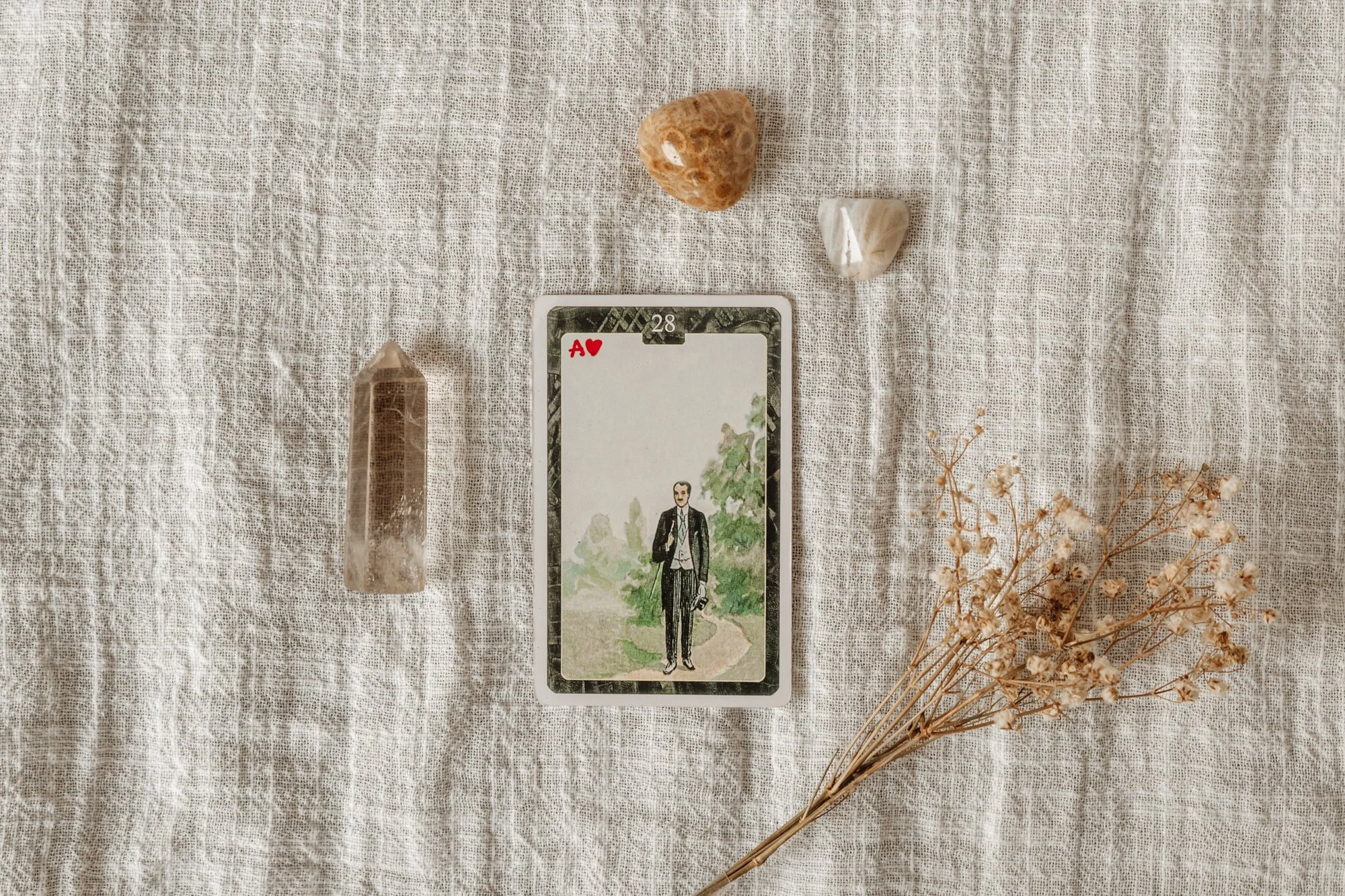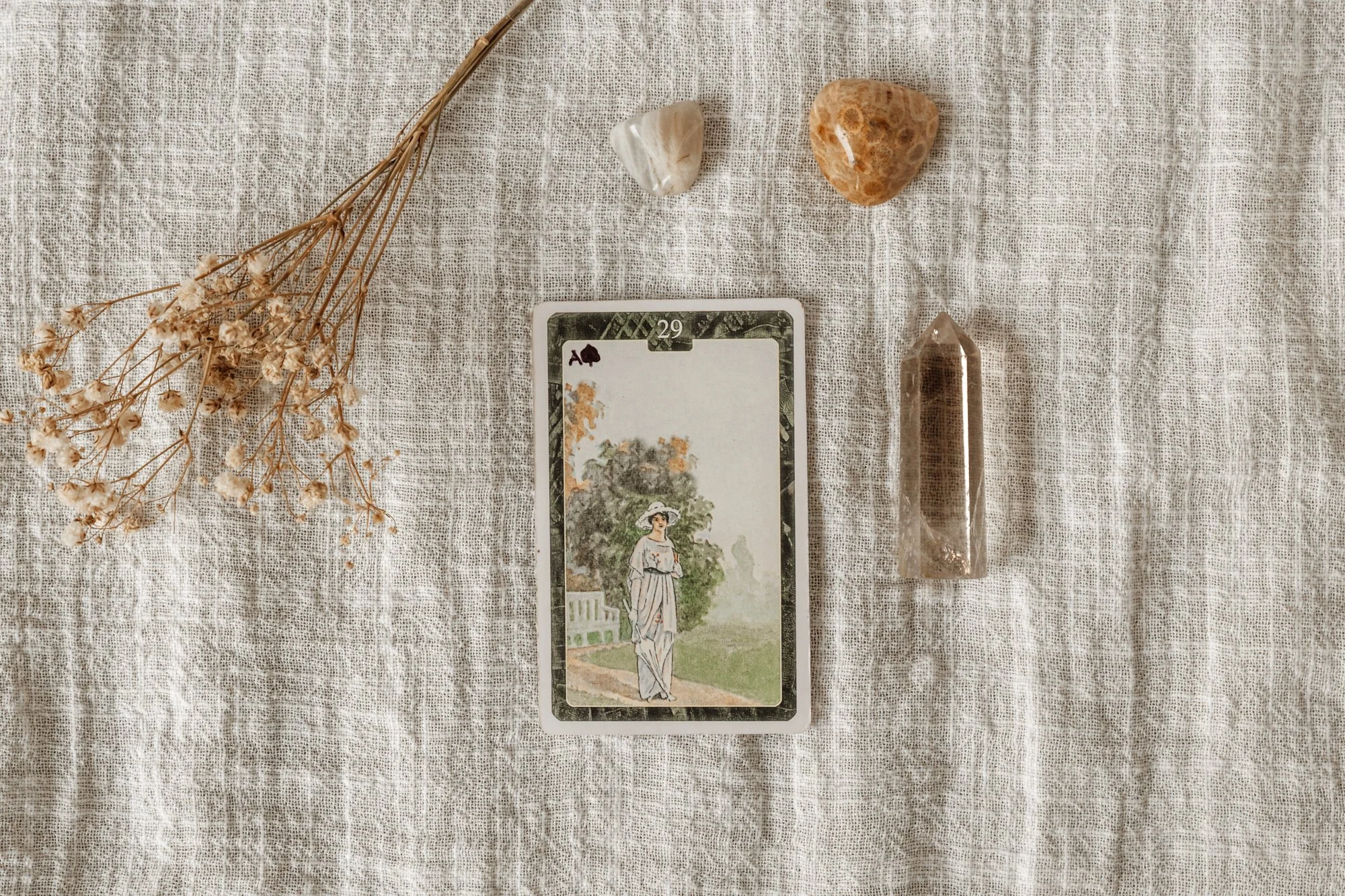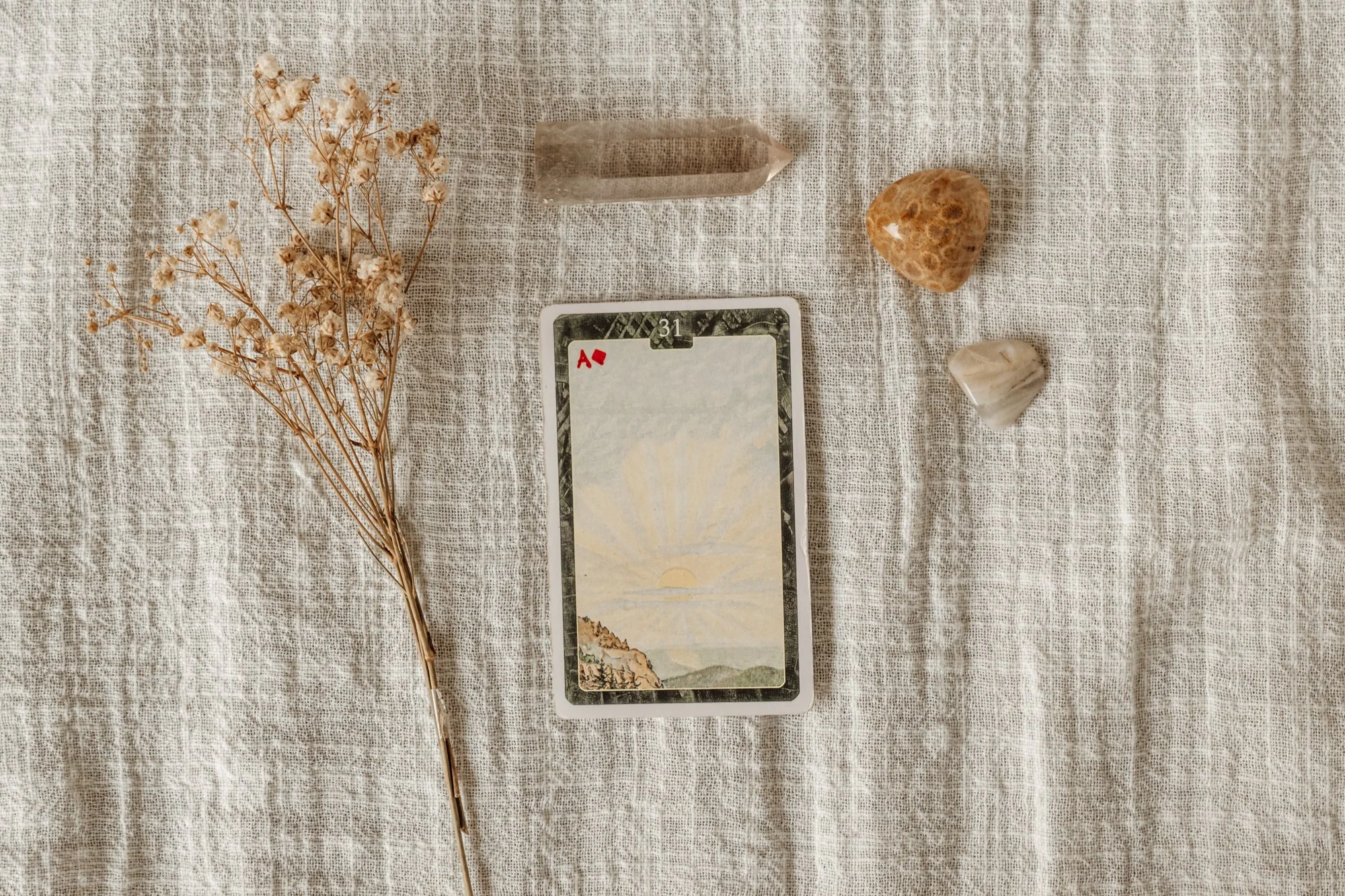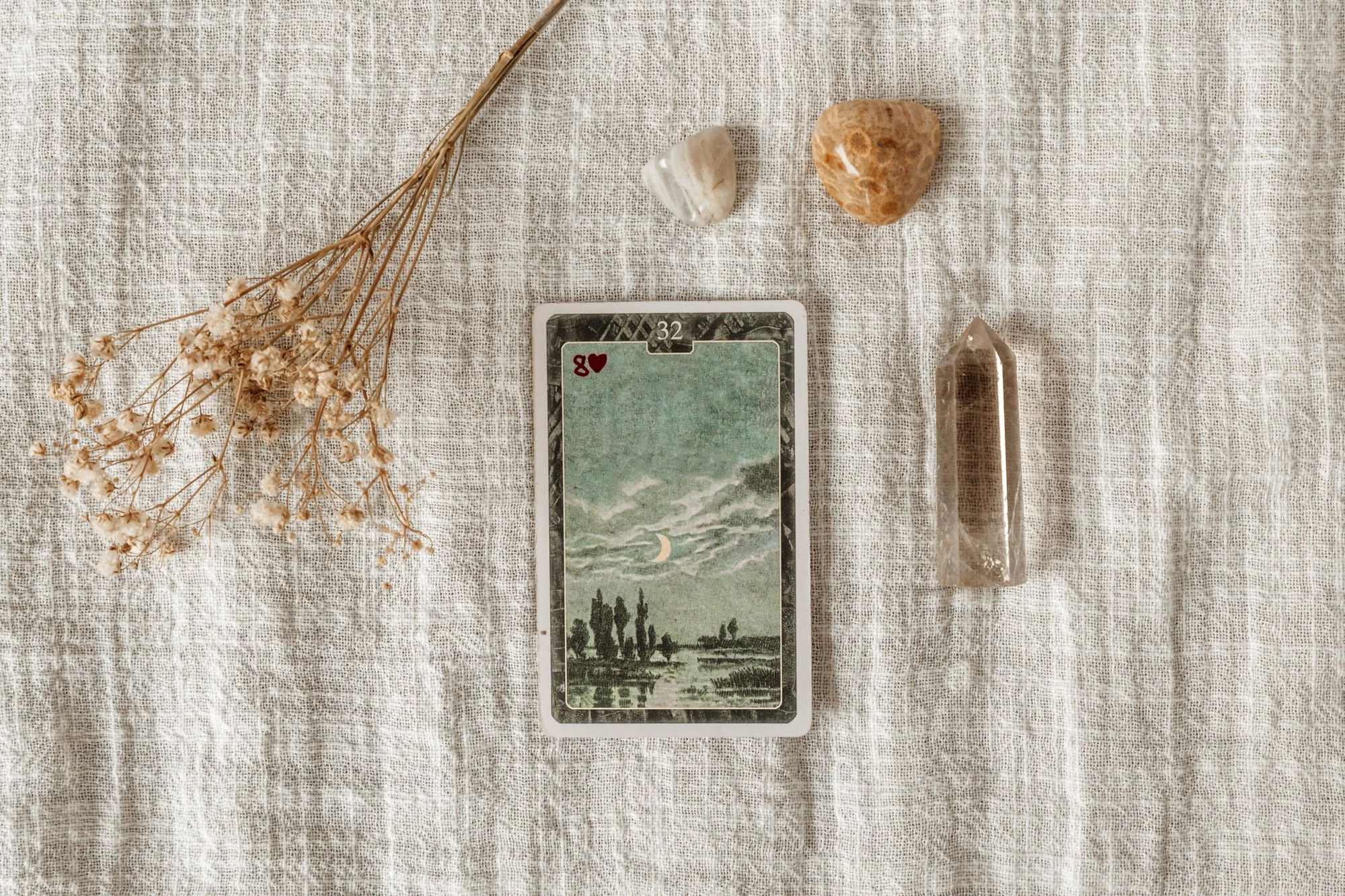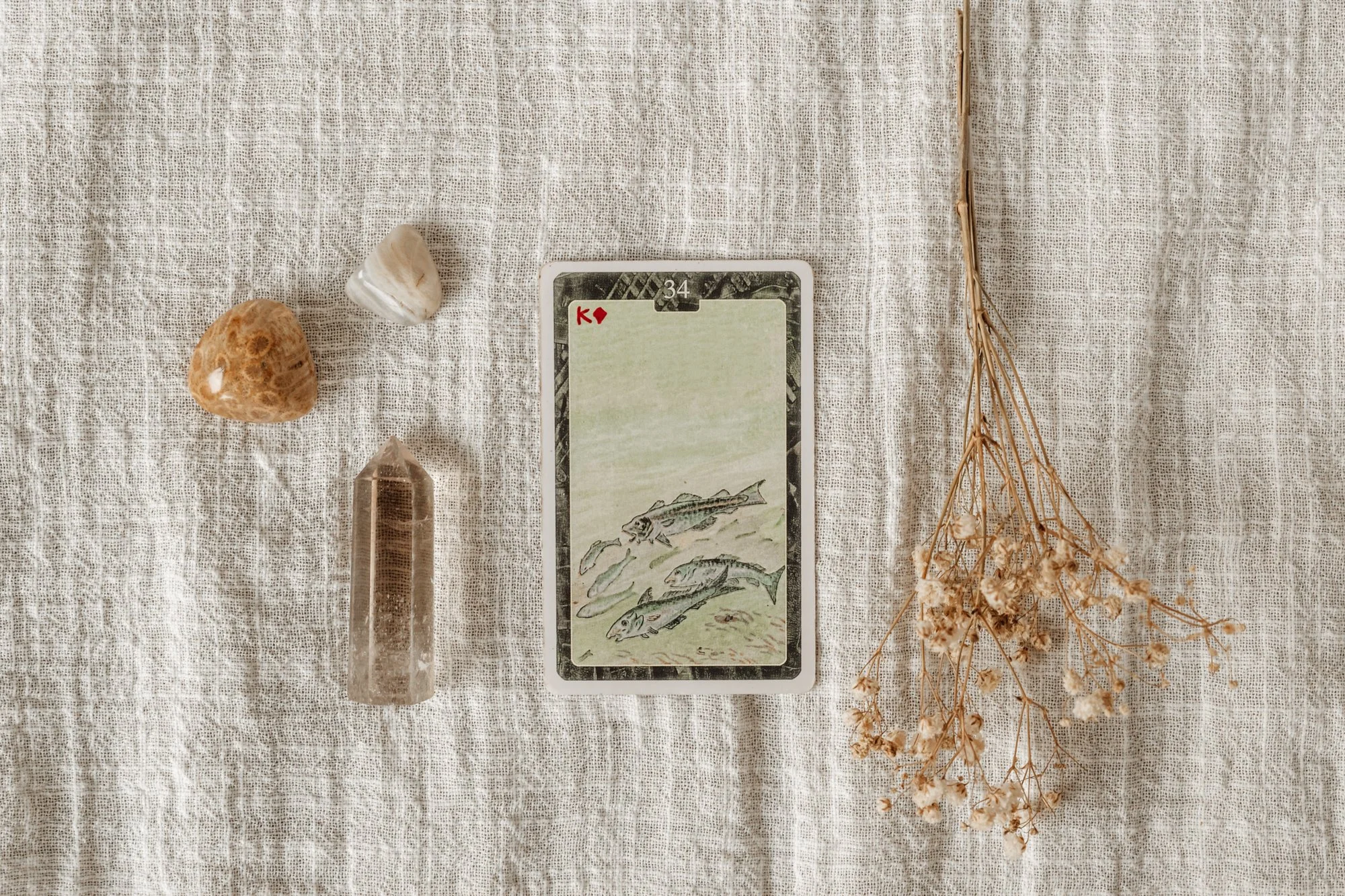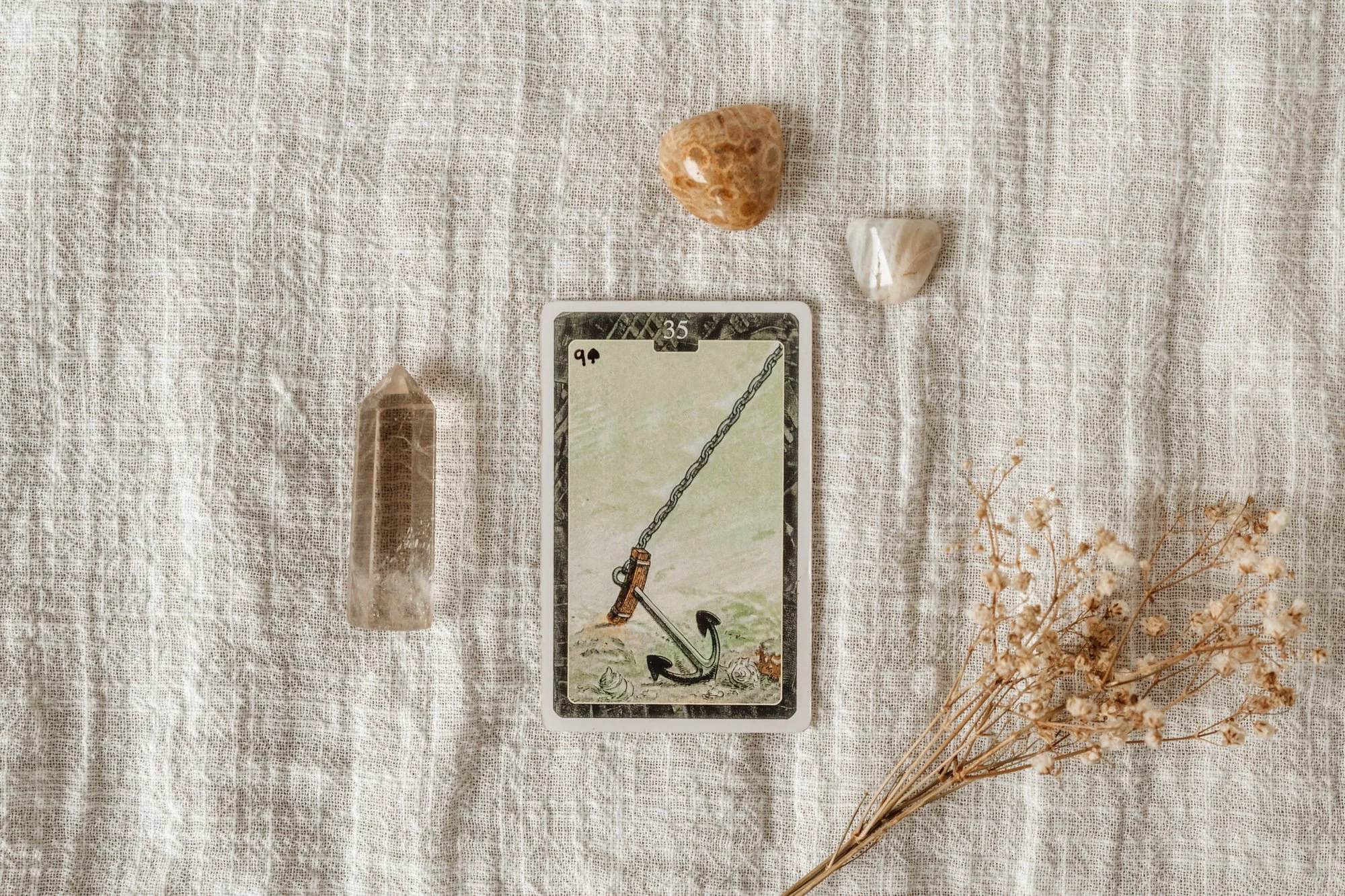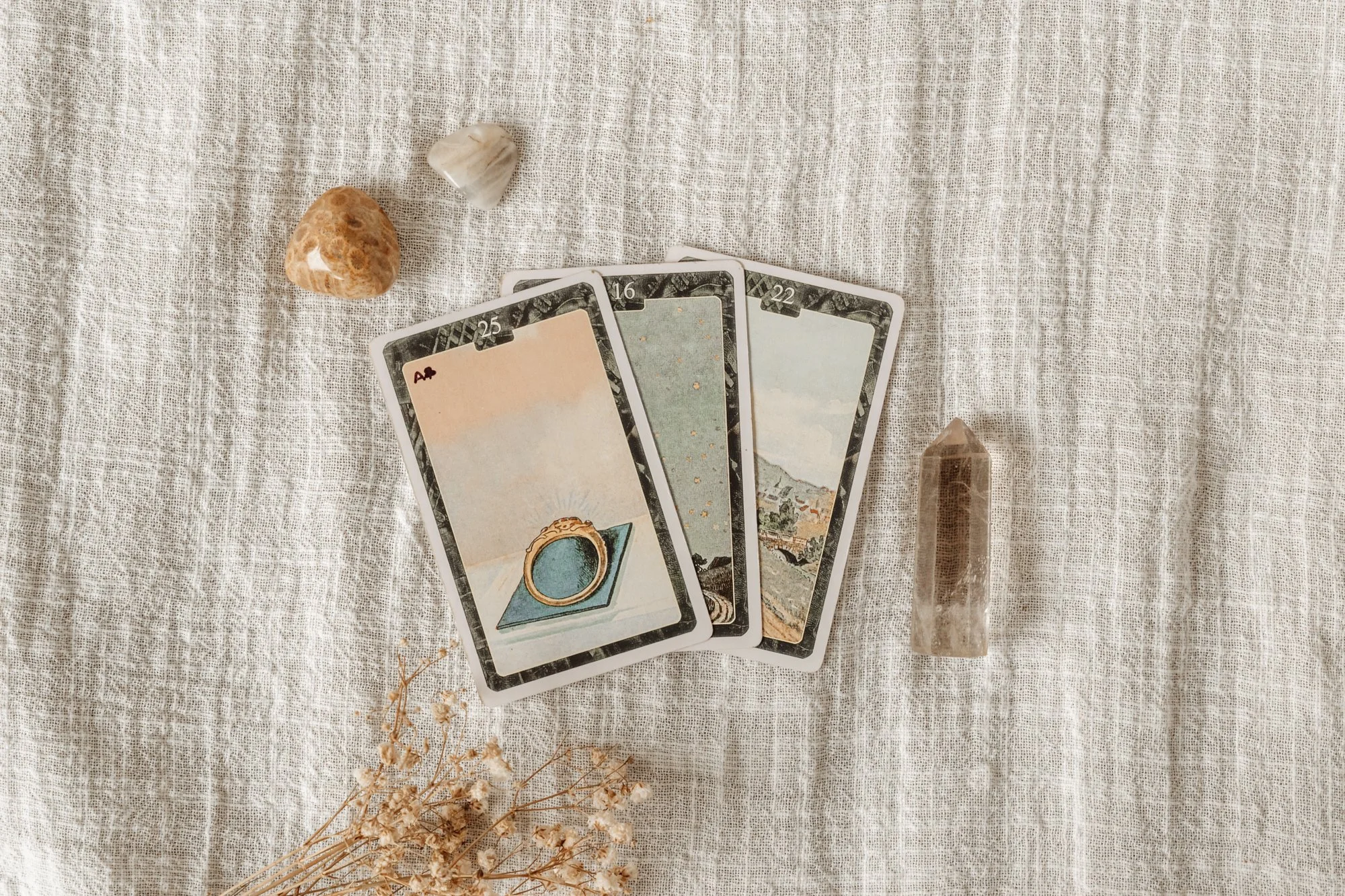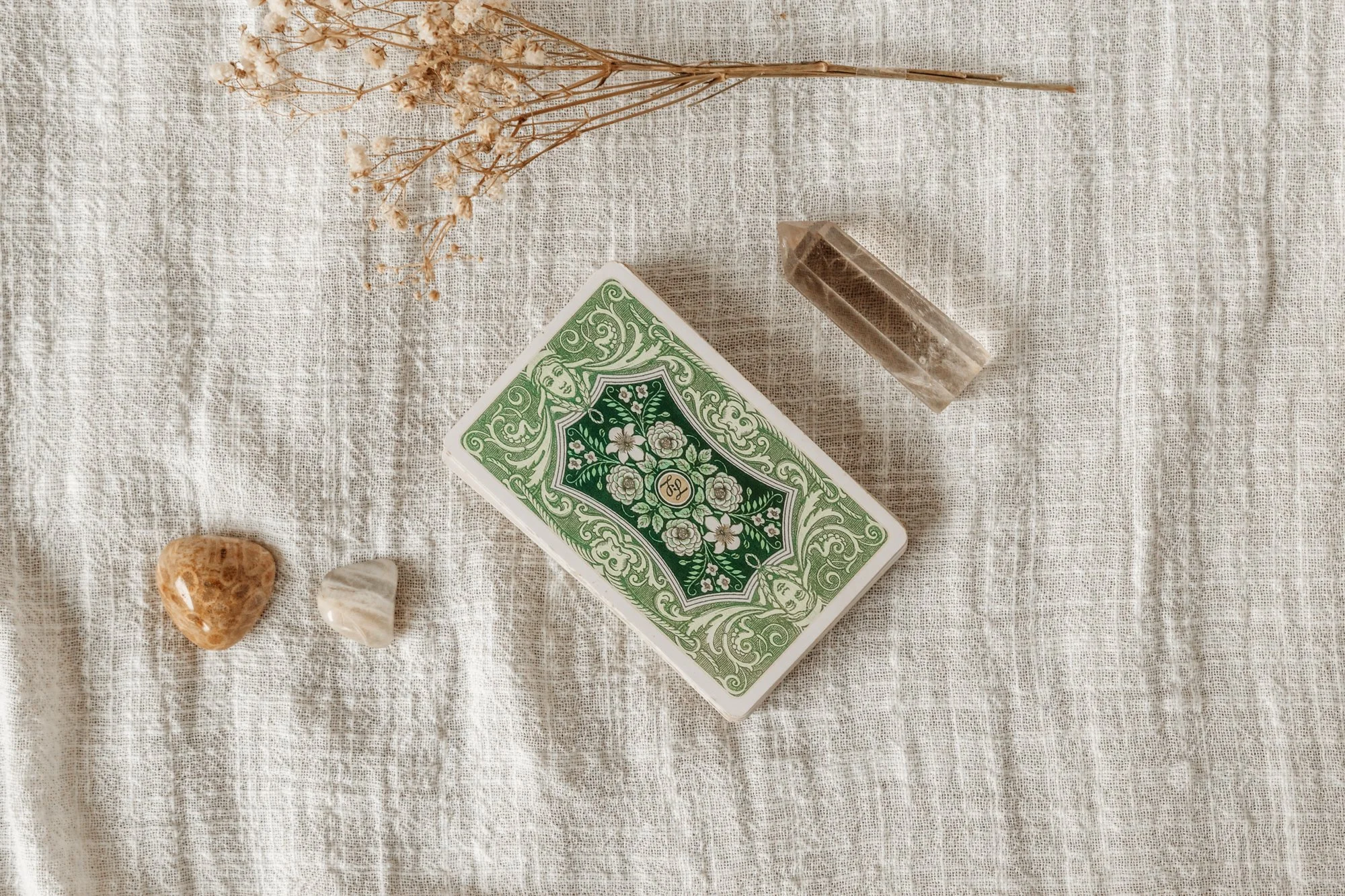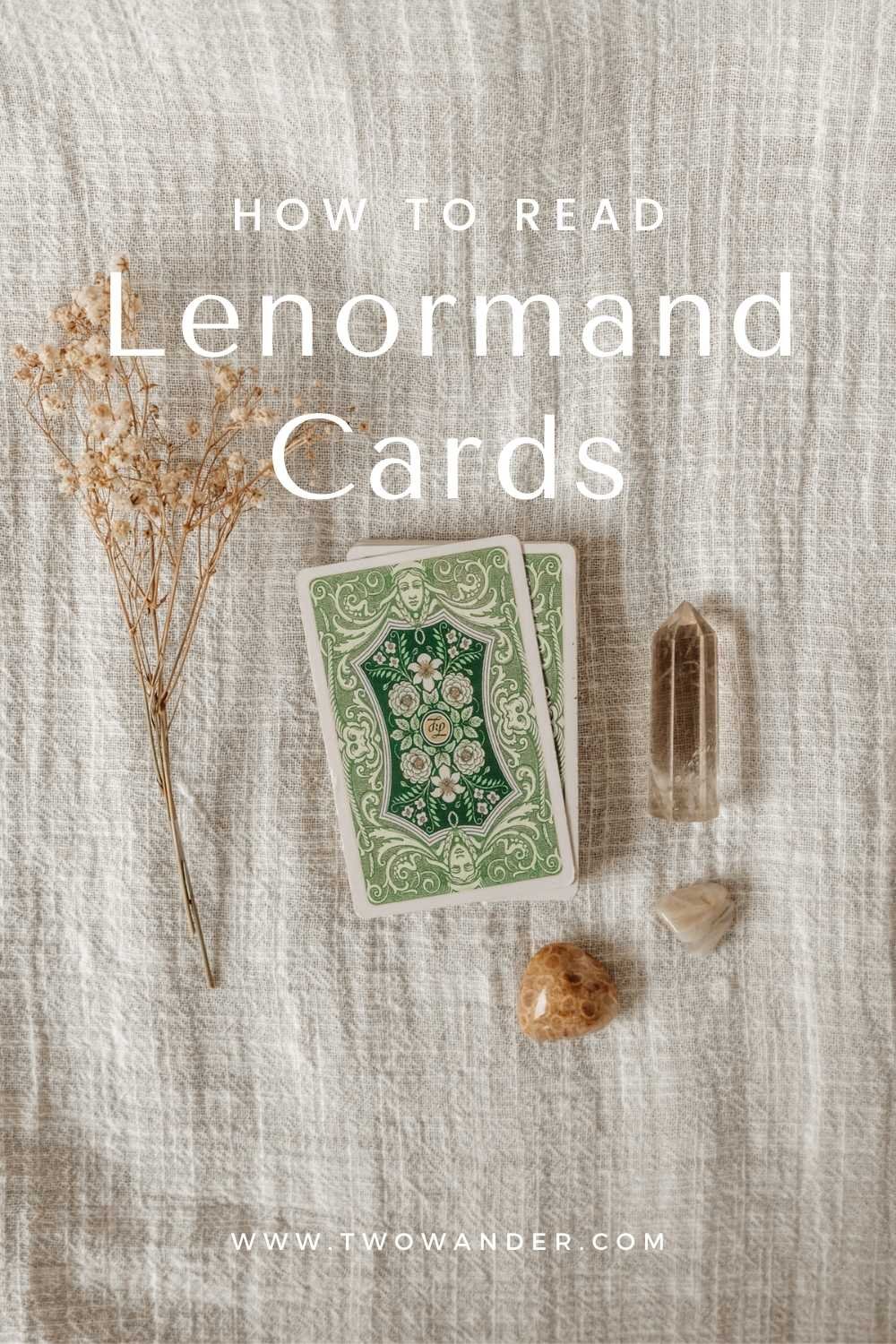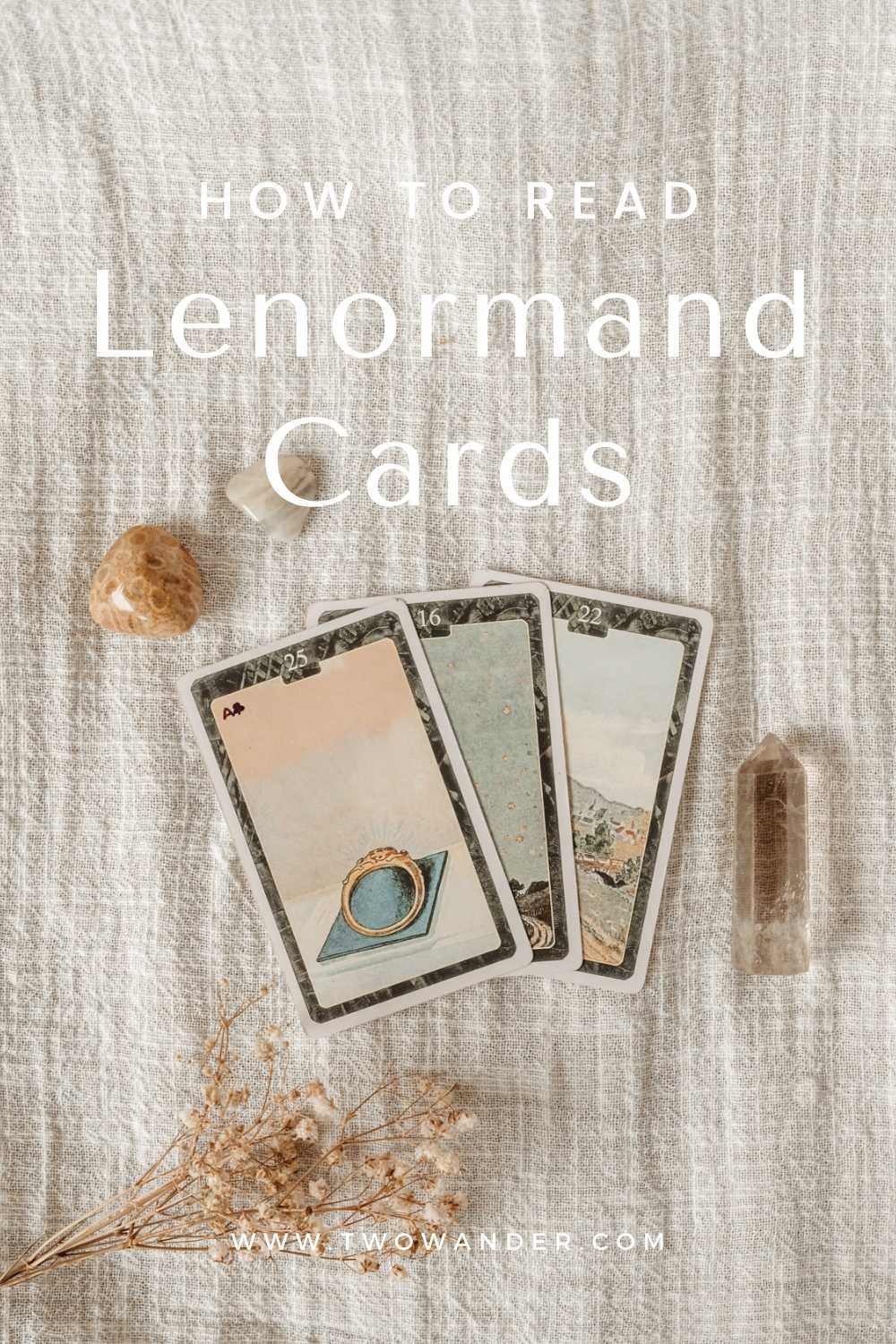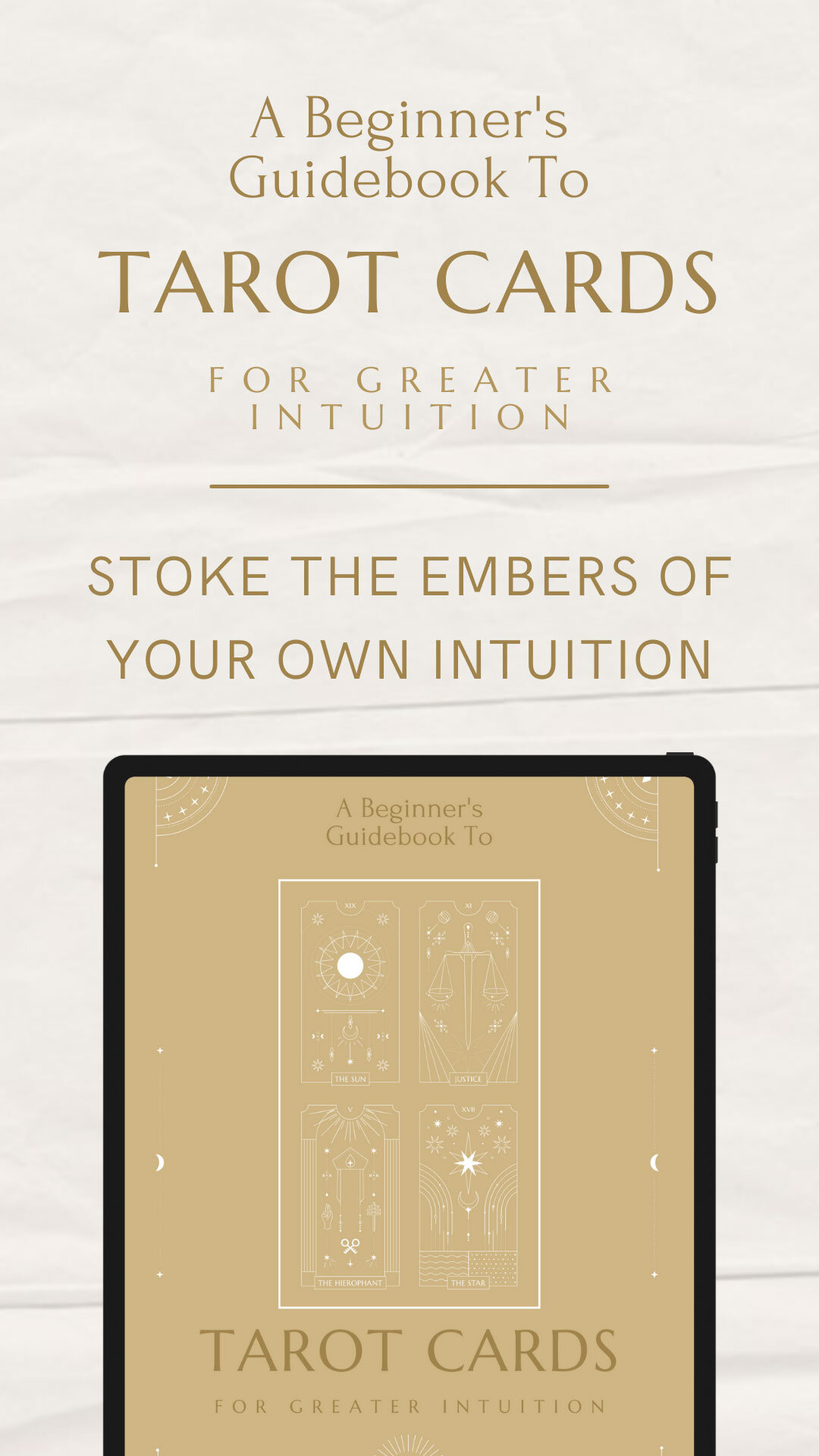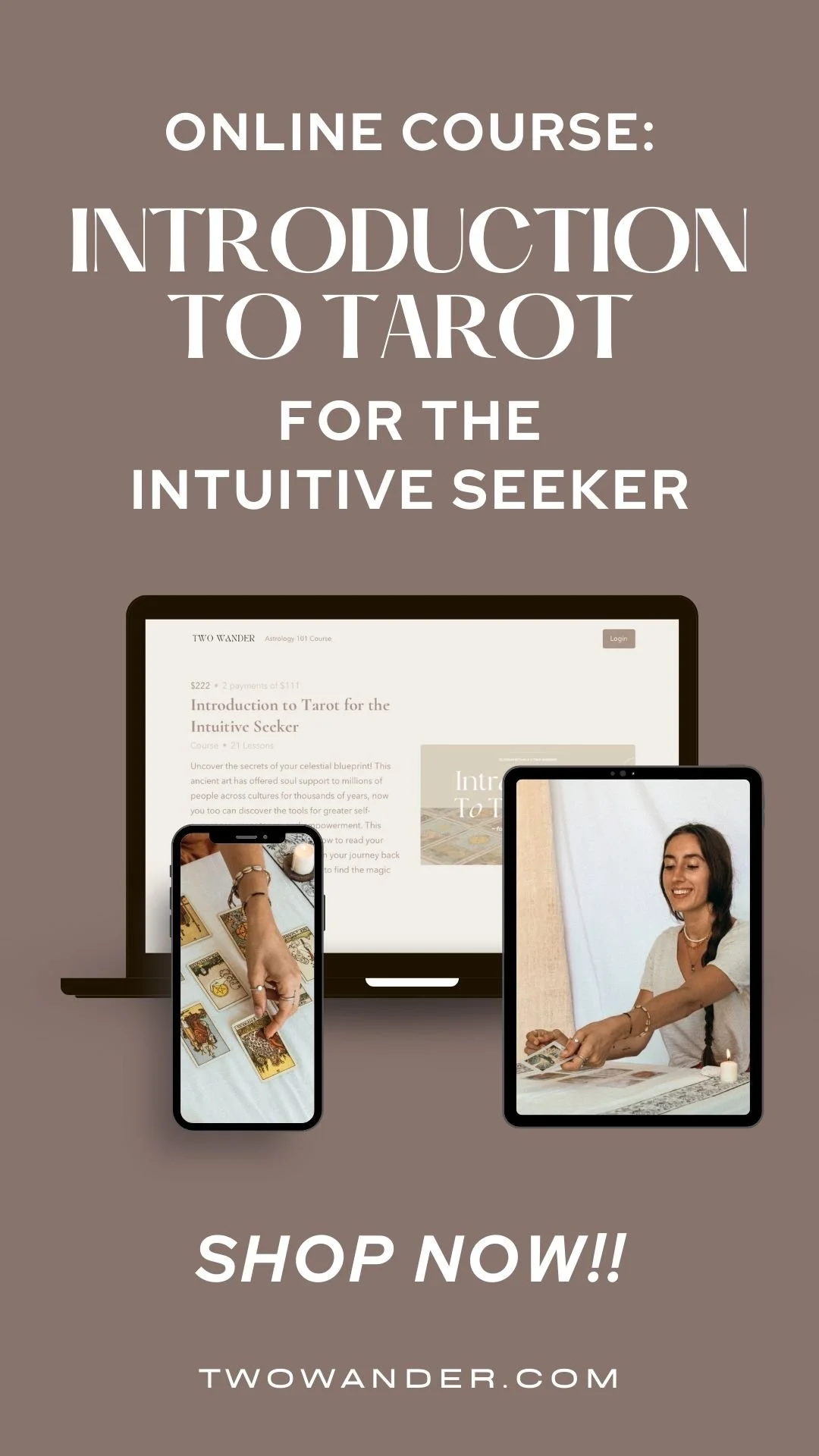How To Read Lenormand Cards
This post might contain affiliate links. If you choose to purchase through these links, we may receive a small commission at no extra cost to you. By using these links you are directly supporting our ability to share our mystical musings, thank you!
Lenormand Cards
Lenormand cards are a cartomantic divination system invented in the 1800s based off of the German game, the Game of Hope, and became very popular in France. They are named after famed 18th French psychic Madame Lenormand, diviner of Empress Josephine, Napoleon Bonaparte’s wife, and Tsar Alexander I of Russia, although Lenormand cards were developed after her death and she likely used a deck of her creation more similar to the Game of Hope ones.
Lenormand cards are simpler than Tarot cards in their interpretation, offering more concise and direct answers, but no less informative! They are read in card combinations to form sentences, a minimum Lenormand reading would require 2 cards, but three is the usual customary. Although their individual meanings are less detailed and nuanced, the method of reading Lenormand can get significantly more complex!
As always, I personally believe that all divination methods are best used for self-exploration, awareness, and guidance, helping us to see a different perspective and gain clarity on a situation. Lenormand readings can be particularly beneficial for simple and clear insight, especially when we need frank answers.
Read on below for their individual meanings and how to combine them:
Lenormand Card Meanings
As mentioned, Lenormand cards are not interpreted on their own, but rather as a sentence, their combination giving us meaning. This follows the European syntax of noun - adjective, rather than what English speakers may be used to with adjective - noun. For example, in English you would say red (adjective) bird (noun), rather than bird red, as you would in the romance languages.
There are 36 pictorial Lenormand cards and each one has several variations on their keyword meanings to be applicable to a vast number of situations, including adjectives (such as slow - slowly). It is also known as petit jeu (little game), because there is also grand jeu that uses a full deck of cards.
On top of this, each Lenormand card is also associated with a card from a standard deck of playing cards. For example, the Lenormand card tree is associated with the 7 of Hearts. This adds another layer of interpretation but also starts to get a bit advanced for the purposes of this post. You can find Lenormand decks both with and without this inset. Whereas a Tarot deck can change meaning depending on the art, Lenormand cards generally always focus on the main symbol with no extra hidden insights or esoteric correspondences.
If you know cartomancy, this will be easier for you! A simple tip is that the black suits (clubs and spades) are more challenging, whereas the red suits (hearts and diamonds) are more positive. The number of the suit can also be used to add up a total and then used as another method of interpretation.
Each card is either positive, neutral, or negative. Neutral cards become either positive or negative based on the cards around it. For example, anchor is a neutral card and can either have more negative connotations when paired with mice, which could indicate a heavy or deep stress; or a lighter interpretation when paired with heart which could suggest a strong or stable love instead.
The way Lenormand cards are laid out are in a line to be read as a sentence for 3 or 5-card spreads; in a 3 x 3 grid for a more detailed reading; or in an 8 x 4 grid with a row of 4 cards at the bottom or a 9 x 4 grid for a complete Grand Tableau reading using all the cards. This is when we have a complex matter to look into and there are many different ways of reading the cards to glean answers from, which we won’t go into again in detail in this post put the Grand Tableau (the most famous card spread) is outlined briefly below.
The cards are then firstly read in a line to form a sentence, and for extra detail with the bigger Lenormand spreads, also includes the corners, the diagonals, the central cards, and other methods such as knighting, “counting round”, mirroring, and more that, again, start to become more complex.
When coming to Lenormand from the Tarot, there can be some preconceived notions of what certain symbols mean, which can be hard to disassociate from. For example, The Tower in the Tarot is a difficult and jarring card, whereas in Lenormand it is neutral and symbolises authority or “alone”. There are also no reversals. Rather than meaning being gleaned from individual cards, Lenormand card combinations are where the information lies.
They can also be used to plainly and tangibly describe people, weather, objects, timings, and much more.
Lenormand Card Meanings:
1. Rider - 9 of Hearts
The first card in the deck is the Rider, bursting out the gate with fresh insight and news. Being on horseback, they are fast. This card brings insight and revelations, often in the form of an actual person. It can be a neutral card as the message received can be positive or negative, or the notion of “haste” can also be positive or negative depending on the situation, but generally it is usually positive.
KEYWORDS: News, passionate, message, communication, athletic, quickly, fast, speed, speedily, running, rush, rushing, hastily, active
2. Clover - 6 of Diamonds
As we are used to symbolically, this is the card of luck! It represents positivity, happiness, light-heartedness, and good things coming to us. It is usually always a positive card to receive (although clouds or another negative card could dampen its effects).
KEYWORDS: Luck, lucky, happy, happiness, happy-go-lucky, fortune, fortunate, positive, chance, short/quick/lighthearted, opportunity, excited, hopeful
3. Ship - 10 of Spades
The ship, of course, represents travel, and by extension, foreign lands and destinations, foreigners, and dealings with abroad. This can be another neutral card as the cards around it will determine whether this will be a good trip or business dealing, but is generally considered positive. It also relates to commerce.
KEYWORDS: Travel, travelling, abroad, foreign, foreigner, adventure, commerce, commercial, trip, journey, holiday, vacation, warmth, travel, movement
4. House - King of Hearts
The House, as you can imagine, represents the home and homeliness, as well as a feeling of stability, structure, safety, and comfort. It can be a neutral card as the other cards will relay what is happening in the home, but is also generally seen as a positive card.
KEYWORDS: Home, house, homely, private, secure, domestic, comfort, comfortable, safe, stable, property, real estate, structure, tradition, traditional
5. Tree - 7 of Hearts
The tree is often said to represent health, family, and ancestry. It is a neutral card dependent on the cards around it for meaning.
KEYWORDS: Health, healthy, ancestral, ancestry, family, familial, familiar, roots, rooted, growth, history, past, grounded
6. Clouds - King of Clubs
Just like anxiety can cloud our mind, so too does clouds represent confusion, anxiety, worry, and stress. They are a negative card and obscure the cards around it. Usually they will be darker on one side which can reflect which card they are applying to most, or if the doubt is coming or going.
KEYWORDS: Confusion, confusing, obscure, obscuring, dark, negative, stress, stressful, doubting, worry, worrying, cloud, cloudy, dark, grey, sadness
7. Snake - Queen of Clubs
The snake usually has more negative connotations of deception and manipulation, however for me it also represents spirituality and transformation. I would personally say it is thus a neutral card and dependent on the cards around it for interpretation but many people would say it is negative. As with all divination, I believe the real magic comes out when you form your own relationship to the system you are using, the point is to connect to yourself and intuition after all!
KEYWORDS: Desire, spirituality, spiritual, betray, seductive, transformative, manipulative, manipulation, secret, secretive, deception, complex
8. Coffin - 9 of Diamonds
As the coffin goes underground, this card represents that which is buried, the deep undercurrents and things in the shadows. It implies something that is hidden or not seen. It can be a neutral card depending on the cards around it for clarification, but is usually negative.
KEYWORDS: Buried, burying, deep, depth, obscure, obscured, rest, resting, hidden, hiding, ending, finished
9. Bouquet - Queen of Spades
Just like a bouquet is a lovely thing to receive, so too does Bouquet represent beauty, gifts, and pleasantness. It is generally always considered a positive card.
KEYWORDS: Happy, beautiful, gift, joy, present, pleasant, charming, nice, niceties, kind, kindness, affection, care, caring, attractive, generous
10. Scythe - Jack of Diamonds
A scythe was used to reap wheat in agriculture, and so represents sudden severing and endings. It is usually painful (it is sharp after all) or difficult and so considered a negative card, but it can also just represent immediacy, urgency, or instantaneously, and in this case would be more neutral.
KEYWORDS: Sudden, suddenly, end, ending, separating, sharp, cutting, cut, curt, accident, fast, quickly, abrupt, warning, dangerous, definitive
11. Rod/Whip - Jack of Clubs
Like the cracking of a whip, the name this card is also sometimes known by, the Rod represents aggression and repetition. It can be a neutral card as it may depend on the other cards whether this is a positive or negative thing (Mice - Rod could represent repeated worries; whereas Letter - Rod could be multiple messages), but generally it is seen as fiery and negative.
KEYWORDS: Repetitive, repetition, repeated, aggressive, aggression, anger, angry, argumentative, abuse, abusive, pain, painful, exercise
12. Birds - 7 of Diamonds
Birds can represent everything from nervousness and tension, like the movement of anxious little birds, to chatter and gossip, like their incessant chirruping, to social media in this day and age, as well as doubles. So Clover - Birds could mean double the luck. It is a neutral card.
KEYWORDS: Two, double, doubling, anxiety, nervous, tension, worries, chit chat, gossip, social media, discussion, restless
13. Child - Jack of Spades
This, as you may imagine, represents youth and naiveté. It can also indicate “small” or little, so Clouds - Child could mean lessening confusion. It can be a neutral card influenced by the others, but is usually seen as positive.
KEYWORDS: Small, smaller, little, lessening, young, youthful, youth, innocent, naive, new, child, children, beginning, fresh, playful
14. Fox - 9 of Clubs
A fox is often considered a cunning, sly creature, but I believe it also represents independence and ingeniousness. It can indicate that something is wrong, off, or not quite right, and is generally considered a negative card, however, depending on the cards around it, could also be inventiveness or simply nocturnal, it also represents working, and so be more neutral.
KEYWORDS: Clever, cleverly, sly, slyly, cunning, intelligent, smartly, night, wrong, bad, independent, self-worth, employment, job
15. Bear - 10 of Clubs
A bear can represent an older female figure of power, like a matriarch, or just power and authority in general. Bears are strong and powerful in general, and so their card meaning reflects this. Whether they are more looming and domineering, or more supportive and wise leaders, depends on the cards around them and so can be neutral, but is generally seen as positive.
KEYWORDS: Authoritative, dominating, powerful, leader, leading, strong, strength, strongly, slowly, boss, bossy, protective, savings, influential
16. Stars - 6 of Hearts
Like a guiding light, Stars are a refreshing representation of hope, faith, and optimism. They are a positive card that bring luck, success, and positivity. This is one that is similar in some ways to the Tarot.
KEYWORDS: Luck, lucky, faith, faithful, hope, hopeful, dreams, optimistic, bright, light, shining, shiny, serene, fortune, destiny, fame, famous person
17. Stork - Queen of Hearts
Just like the fairytale where the stork brings the baby and your life is changed forever, the Stork card represents change and transformation. This is more literal than the Snake which is more of a figurative, spiritual transformation of the self and ego say, whereas Stork brings about actual manifestations of changing things. It is a neutral card as what kind of developments it will bring are dependent on the cards around it.
KEYWORDS: Change, changing, transform, transformation, transforming, develop, developing, developed, different, relocation, pregnancy
18. Dog - 10 of Hearts
This is one we are familiar with already as loyal and friendly, and the Lenormand meaning is no different! On top of this, of course, all Lenormand cards can also be their literal meaning- so Dog could be a actual dog, Tree can be an actual tree etc, this is especially useful for when trying to retrieve lost items! Dog is generally considered a positive card.
KEYWORDS: Friend, friendly, friendship, loyal, faithful, supportive, helpful, caring, kind, committed, honest, honestly, trustworthy, assistance, devoted
19. Tower - 6 of Spades
Tall and looming, the Tower represents government, hierarchy, bureaucracy and authority. It’s also a representation of our modern day skyscrapers and, as such, can represent work or the office. It is a neutral card as the cards around it will say how this manifests.
KEYWORDS: Authority, established, government, rules, isolation, hierarchy, bureaucracy, legal, legalities, official, private, corporation, hospital, prison
20. Garden/Park - 8 of Spades
As a public garden was one of the main places to be seen and meet in society back in the day, Garden represents public life and affairs. It is a positive card.
KEYWORDS: Public, public life, public affairs, collective, communal, social, society, societal, community, get-together, popular, culture
21. Mountain - 8 of Clubs
Often mountains are metaphorically seen as obstacles to overcome, and the Mountain card is no different. It represents challenges and difficulties in our way and is generally a negative card.
KEYWORDS: Obstacle, challenge, challenging, difficult, difficulty, big, heavy, burdensome, hurdle, delay, immovable, stubborn
22. Crossroad/Path/Road - Queen of Diamonds
When we come to a crossroads, we have a decision to make about which road to take, and so Path represents a choice. It is a neutral card as the outcome or difficulty of this will be reflect in the surrounding cards.
KEYWORDS: Choice, choices, option, options, optional, decision, decisions
23. Mice - 7 of Clubs
Like mice gnawing away at food, especially when it has been left out or is stagnant and decaying, the Mice card is often an unpleasant one to receive, but it can sometimes simply represent a lessening (like the food that they eat slowly decreases in size). In this way it is usually seen as negative but can sometimes be considered more neutral if near a positive card.
KEYWORDS: Stress, damage, anxiety, doubt, worry, decay, stagnant, rot, abandoned, lessening, decreasing, decrease, loss, theft, deterioration
24. Heart - Jack of Hearts
The Universal symbol of love! Heart is all about love, romance, relationships, emotions, and feelings. It is generally positive but can, of course, have less desirable outcomes when paired with more challenging cards such as Birds, Mice, Clouds, Rod, or Scythe.
KEYWORDS: Love, loving, lovely, kind, care, caring, generous, generosity, relationship, relationships, relational, romance, romantic, feelings, emotion
25. Ring - Ace of Clubs
When we receive a ring it is often the sign of a commitment (engagement, wedding etc), and its circularity represents a never-ending cycle. Again, like with all of them, it can also represent a literal ring or jewellery. It is a neutral card.
KEYWORDS: Commitment, committed, loyal, continuous, continuing, cycle, ongoing, lasting, promise, promising, deal, contract, going round in circles
26. Book - 10 of Diamonds
Just like we read books to receive knowledge, so to does Book represent this. Until we read the book, however, we don’t know what it contains, and so it can also represent mysteries or secrets (once upon a time only a select few were able to read, the messages of books were certainly unknown to the masses)! It is a neutral card.
KEYWORDS: Wisdom, knowledge, knowledgable, coming to light, secrets, mystery, unknown, hidden, revealed, information, informed
27. Letter - 7 of Spades
As the primary form of communication, Letter represents news, messages, information, and communication. Today, this can represent email or written letters such as formal appointments. It is a neutral card, its contents indicated by the surrounding cards.
KEYWORDS: Message, expressive, communication, communicative, news, information, insight, email, official letter, written, document, conversation
28. Man - Ace of Hearts
These next to cards are known as significators and represent the querent (seeker) or someone in their life. For example Dog - Man could be a friendly or jovial man. They are placeholders for the cards around them to happen to them. Where they fall in a larger spread and what they are surrounded by will be key to answering your question.
KEYWORDS: Man, male
29. Woman - Ace of Spades
Likewise Woman represents the querent (the person asking the question), their partner, or someone who will be doing the action or having something occur to them. These are both neutral.
KEYWORDS: Woman, female
30. Lily - King of Spades
The Lily is somewhat of a conundrum, on the one hand it represents virtue, integrity, honesty, values, maturity, wisdom, and spirituality; on the other it can represent sexuality. It is a positive card.
KEYWORDS: Sex, sexuality, wise, wisdom, mature, maturity, elder, older, age, old, honesty, honest, virtue, virtuous, true, integral, spirituality, fertility
31. Sun - Ace of Diamonds
Similar to the Tarot Sun card, as you can imagine, the Lenormand Sun represents warmth, success, and vitality. It is generally considered a positive card.
KEYWORDS: Happy, happiness, success, successful, vital, vitality, vibrant, positive, abundant, optimistic, warm, sunny, sun, sunshine, bright
32. Moon - 8 of Hearts
The Moon, unlike the Tarot Moon, on the other hand, represents our work, profession, job, and recognition. Sometimes it can also be taken to mean as intuition and emotions, but I think these are more crossovers from Tarot card meanings, but I find them are useful nonetheless. It is generally considered a neutral card.
KEYWORDS: Recognition, promotion, accolades, success, reward, recompense, raise, praise, job, career, work, ambition, destiny, goals, imagination, art
33. Key - 8 of Diamonds
Similar to English, Key represents a key piece of information, or the secret, prime ingredient in the sauce. It can be considered as “unlocking” doors, bringing information to light. It is a positive card.
KEYWORDS: Key, integral, main, important, unlock, unlocking, opportunity, open, opening, bringing to light, answer, connection, liberated
34. Fish - King of Diamonds
As with tasseomancy (tea leaf reading), fish are considered lucky symbols of success, abundance, and prosperity. They represent business and money, as well as depth (swimming in the deep, below the surface). They are generally considered positive but based on the cards around it can be more neutral (as a business owner you would not want to see Mice - Fish, a lessening of finances)! Woman - Fish could indicate a businesswoman.
KEYWORDS: Money, finance, finances, financial, business, prosperity, abundance, abundant, resources, flow, water, depth, deep, luxurious
35. Anchor - 9 of Spades
Just like an anchor fixes a boat and anchors it to one spot, so to is Anchor stabilising. It is can be a neutral card in that Heart - Anchor indicates a secure love, whereas Clouds - Anchor represents confusion that is here to stay, but is generally seen as positive.
KEYWORDS: Stable, stabilising, grounding, grounded, secure, safe, safety, dependable, dependability, unmoving, regular, sure, resilient
36. Cross - 6 of Clubs
The final card generally represents burdens we bear, like the cross we carry, but it can also represent religion, spirituality, or faith. It can therefore be seen as a neutral card, but is usually more negative.
KEYWORDS: Burden, heavy, cumbersome, religious, priest, church, spiritual, faith, faithful, trusting, difficulties, suffering, dutiful, responsibility
The order of the Lenormand cards in the way they appear above is extremely important because it dictates the “houses” (placements) in the Grand Tableau which are used to give an extra layer of meaning (for example, House number 1 would be the Rider’s House, and if Clover were to land there after shuffling and dealing, it could indicate lucky news arriving). Unfortunately, their order doesn’t seem to follow much rhyme and reason, and so many rhymes have been invented to try and memorise them, I invite you to create one for yourself!
Here is mine: He rode over the field of clover to sail to the house by the tree. A cloud shaded the snake on the coffin hugging a bouquet cut with rage. Two children, a fox, and a bear looked at the stars as storks flew overhead. The dog ran up to the tower garden on the side of the mountain path, where he passed mice reading a book and writing a letter to a man. The woman was wise and happy at work, the key was the money that brought her stability and lifted her burdens.
Just like with the Tarot, the skill in reading Lenormand lies in the ability to expand on their meanings to intuitively answer the question on the matter at hand based on the circumstance and surrounding cards by use of storytelling. Get creative and use your imagination! Think outside the box and stretch your limitations. They also make a wonderful pairing together, where the Tarot can give more depth and layered nuance, Lenormand can bring practical, direct advice.
How To Read Lenormand Cards
As stated above, Lenormand cards are read like sentences following the romance language syntax with noun first and then adjective. So if we were to interpret House - Dog, this could be friendly living environment; whereas Dog - House would be the family dog. Whip - Child could mean a small argument whereas Child - Whip could be repeating naivety.
Here’s a few examples for how to read popular spreads:
3-Card Spread
Cards: 1. Stars 2. Fish 3. Stork
Interpretation: Reading the cards “chained” in pairs as 1 + 2, 2 + 3, and “mirrored” as 1 + 3, could mean luck in finances, changing business, and luck relocating. Combined this could be interpreted as a prosperous business decision from moving, or that current financial luck will change. You can also choose beforehand which card will represent your main one and then read from there.
5-Card Spread
This is done in a similar way where you can read them in a “chaining” method, so 1 + 2, 2 + 3, 3 + 4, 4 + 5. Then you can also mirror 1 + 5, 2 + 4, and take 3 as the central theme.
9-Card Spread
This is essentially 3 three card spreads that can then be dissected further. I like to look at the three verticals, two diagonals, four corners, the central card for an overall theme, and the four cards forming a diamond shape. The three cards in the vertical lines can also be seen as past - present - future, and the three horizontal lines can be seen as most conscious and influential on the top line, to more subconscious and with less ability to influence on the bottom line.
36-Card Grand Tableau Spread
Using all the cards in either a 9 x 4 grid or an 8 x 4 with four cards on the bottom row representing a summary, crux, or concise answer to the matter. This is the most complex and time consuming, but also the most detailed. You can begin by finding the significator and using it as a placeholder for where the past/present/future and conscious/unconscious will fall based on their placement (the row and column they are in respectively).
You can read the lines in similar ways to above with chaining, as well as mirroring the significator. Do the same for theme cards representing your question, such as fish for financial questions. You can also look at the diagonals from the significator/theme cards and the four corners for context.
Within this, you can read a 9-card spread using your significator as the central card. Knighting is like the chess move where you look at the card either two up/down/along and one across from the significator/theme card more detail.
Cards that are further away from the significator have less of an influence. This is also where you can use the concept of Houses discussed above. There are many other techniques to use in a Grand Tableau but this is probably enough to get your head around for now!
It can take some time to get used to reading Lenormand cards, but once you get the hang of it it becomes much more fluid. Doing small daily card readings will help (where you would take the “lighter” keywords for each card as generally we don’t go through too many dramatic events every day, so scythe could even represent a paper cut or haircut for example).
So that’s a brief overview of how to read Lenormand cards. They’re a wonderful system for when you need some direct, concise guidance or practical advice. It takes some time to get used to learn Lenormand syntax, but they can be a useful addition to your practice once you get the hang of them! If you feel called to, you could even pair them with Tarot or Runes.
Do you use Lenormand cards? Let me know in the comments section below if you have any suggestions or questions!
If you’d like to learn more about the differences between some other cartomantic divinatory systems, check out our post on the Tarot Cards vs Runes vs Oracle Cards.
For a personalised reading for some soul wisdom, book in a personalised Tarot or Rune Reading with me!
To learn more about the world of Tarot, enrol in my Intuitive Tarot Course!

